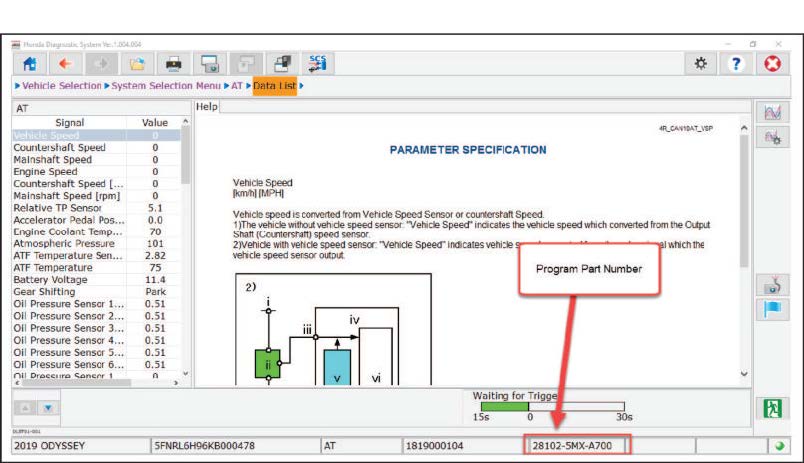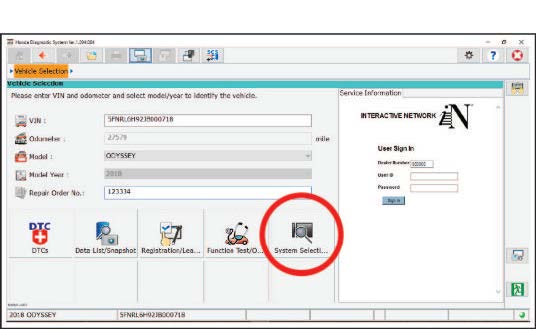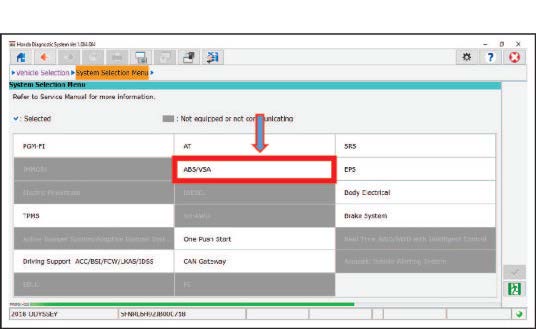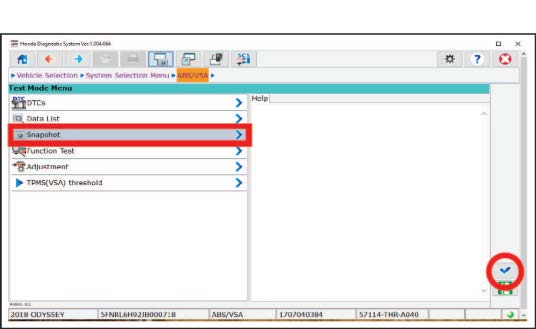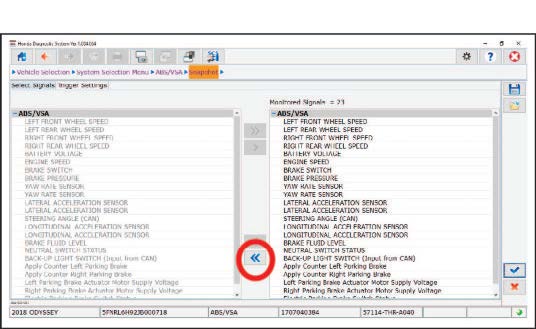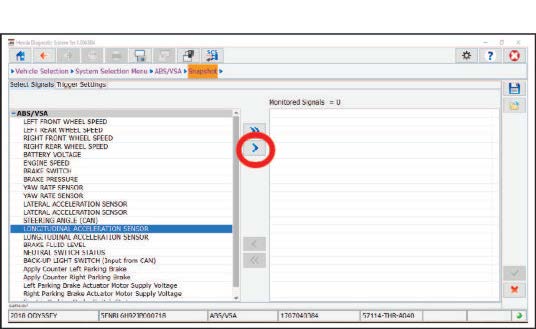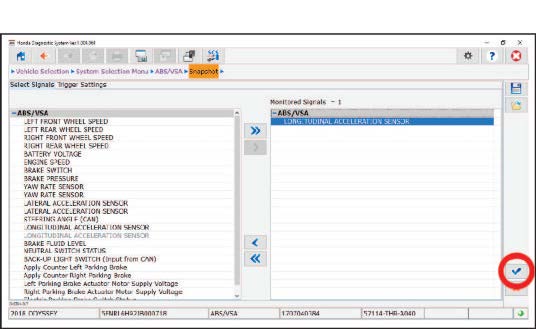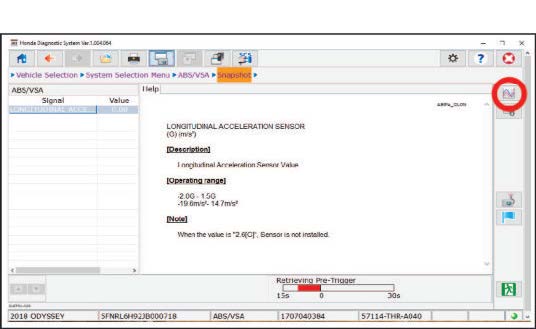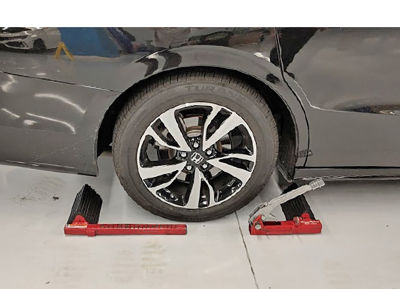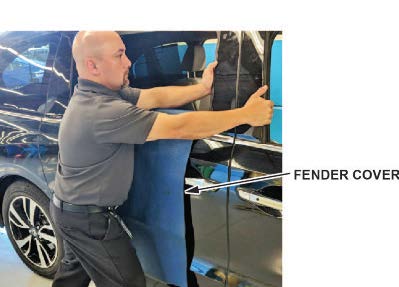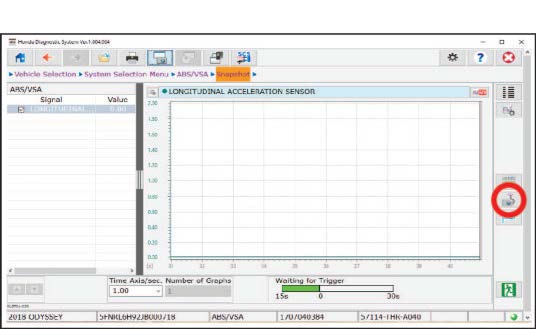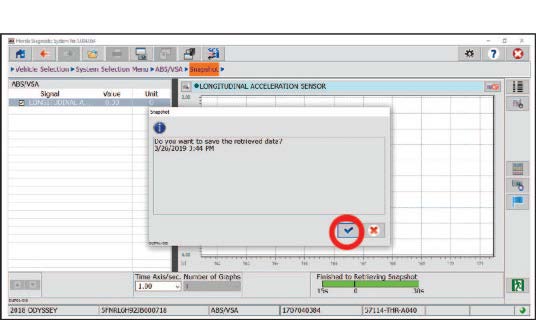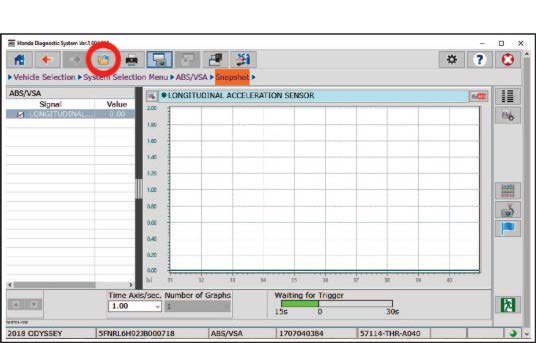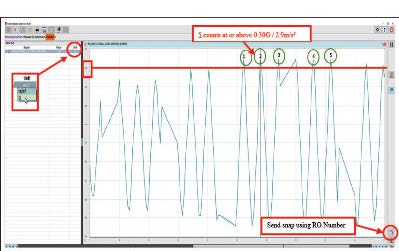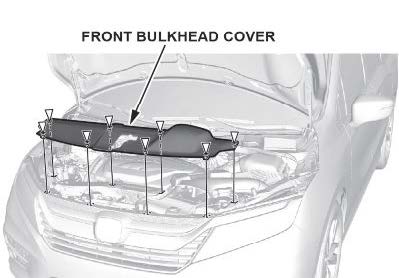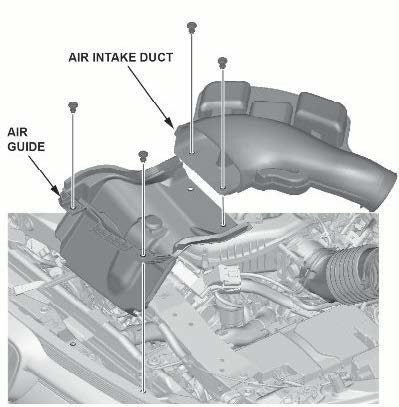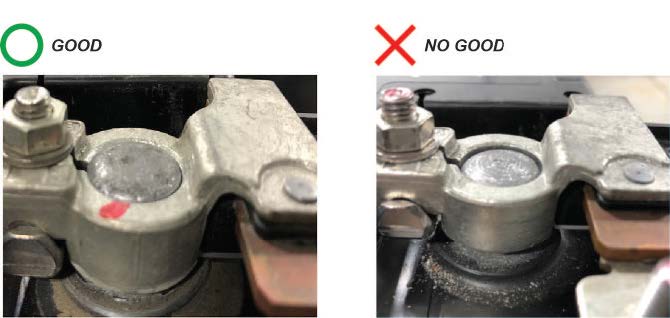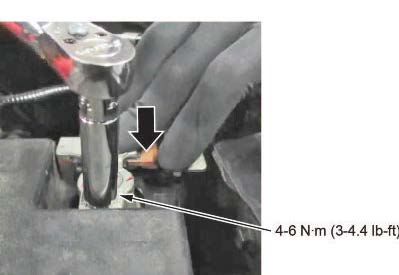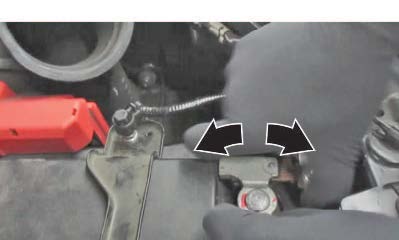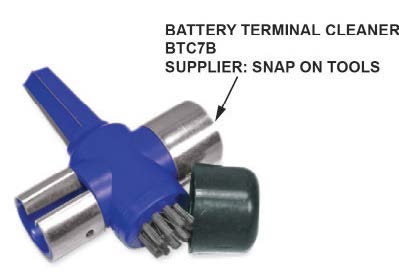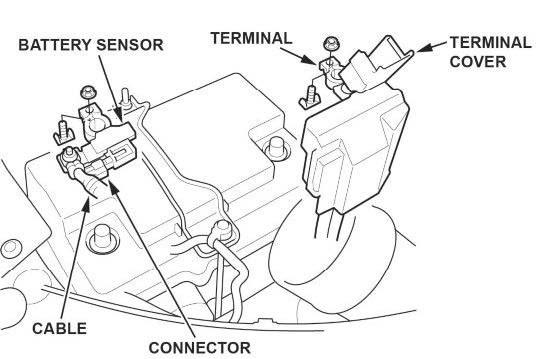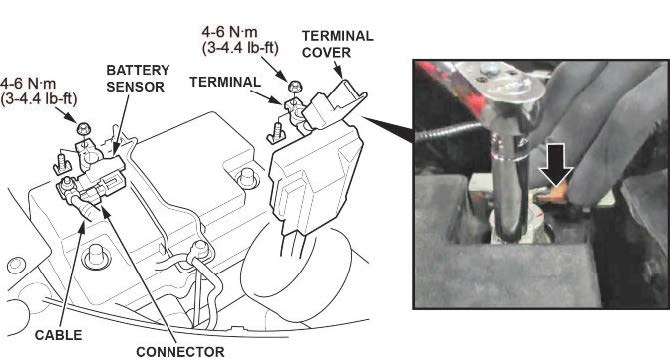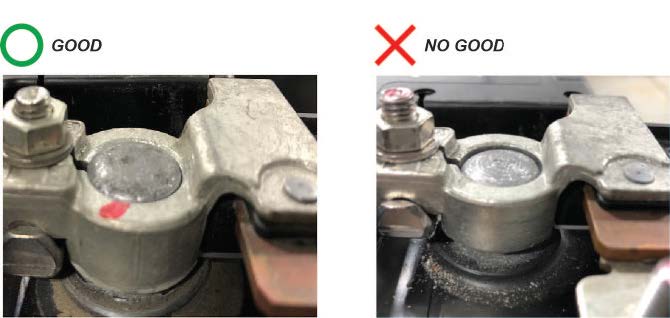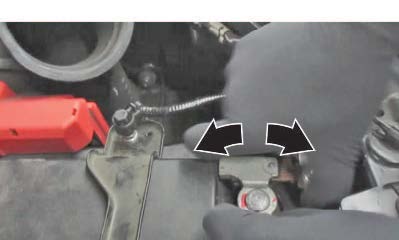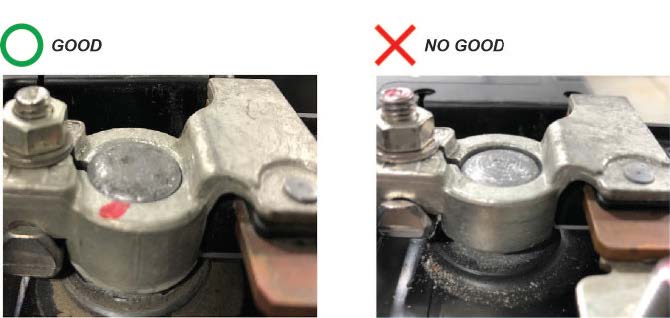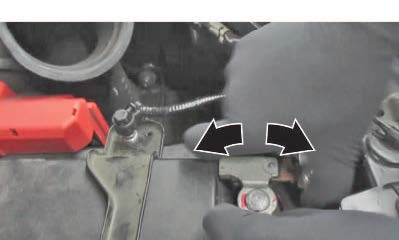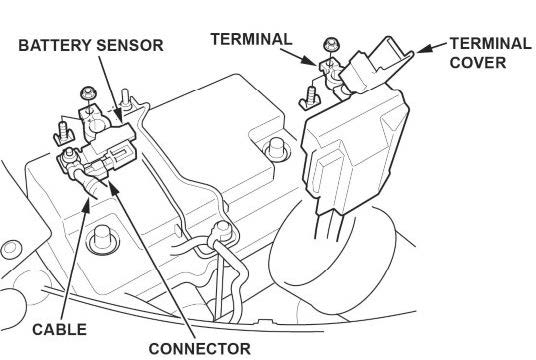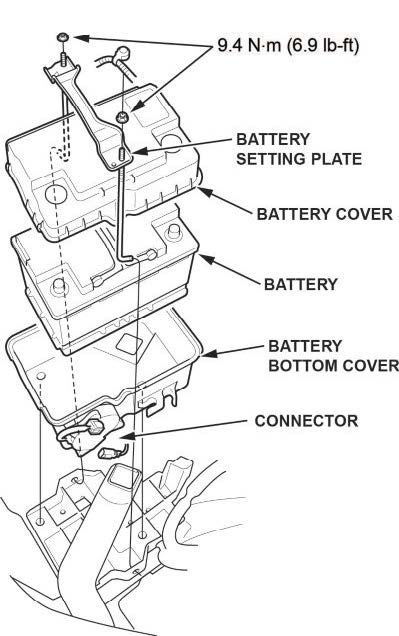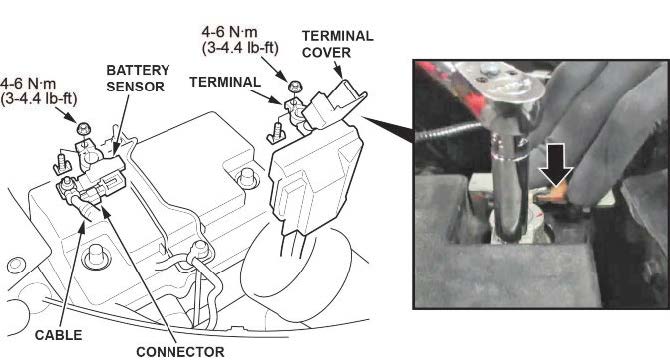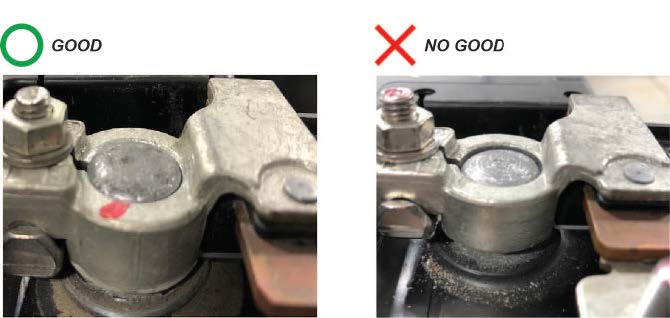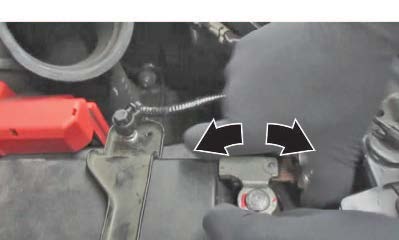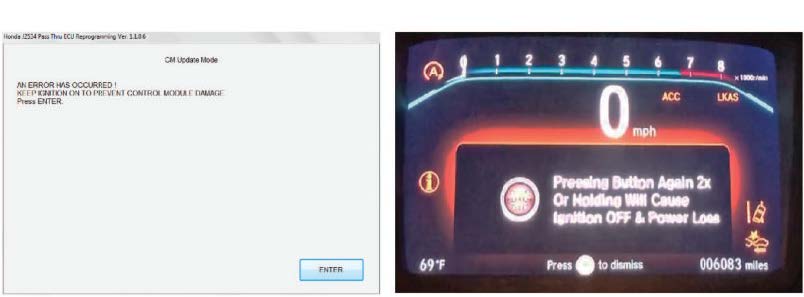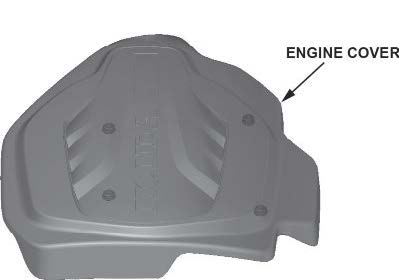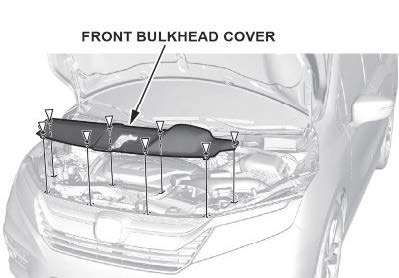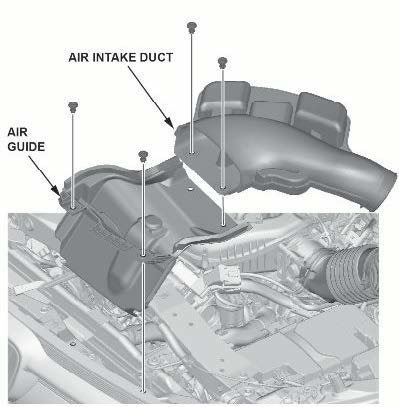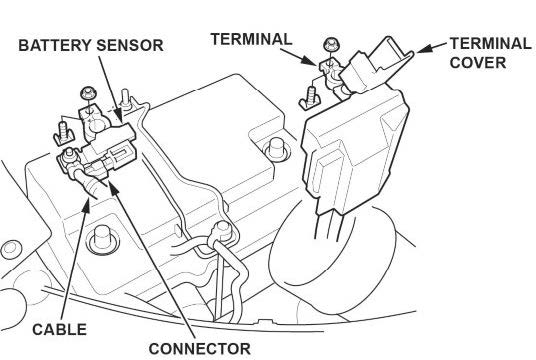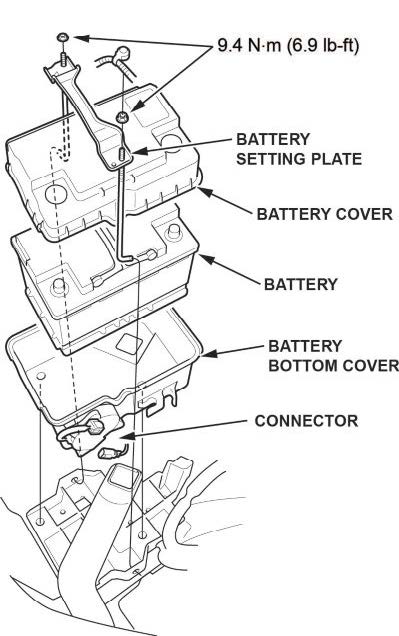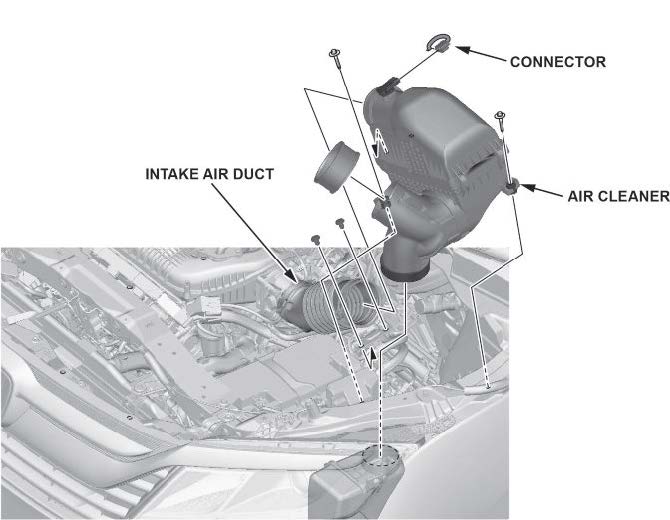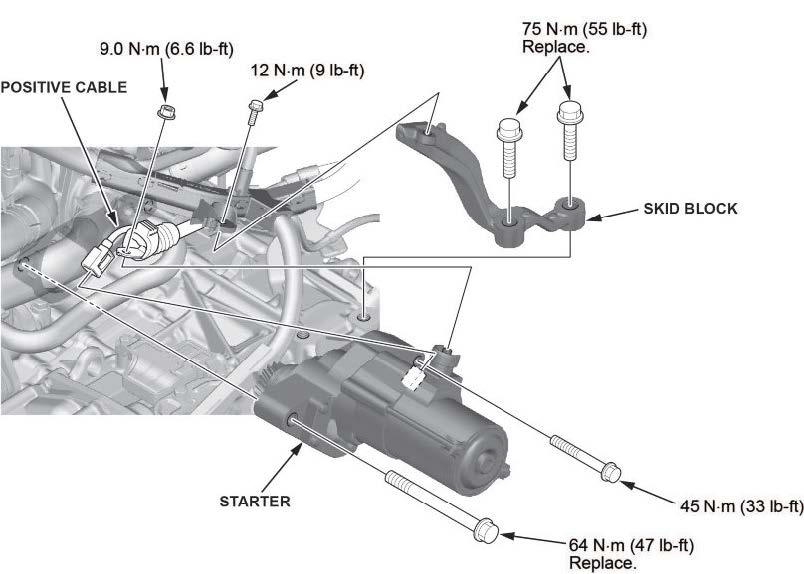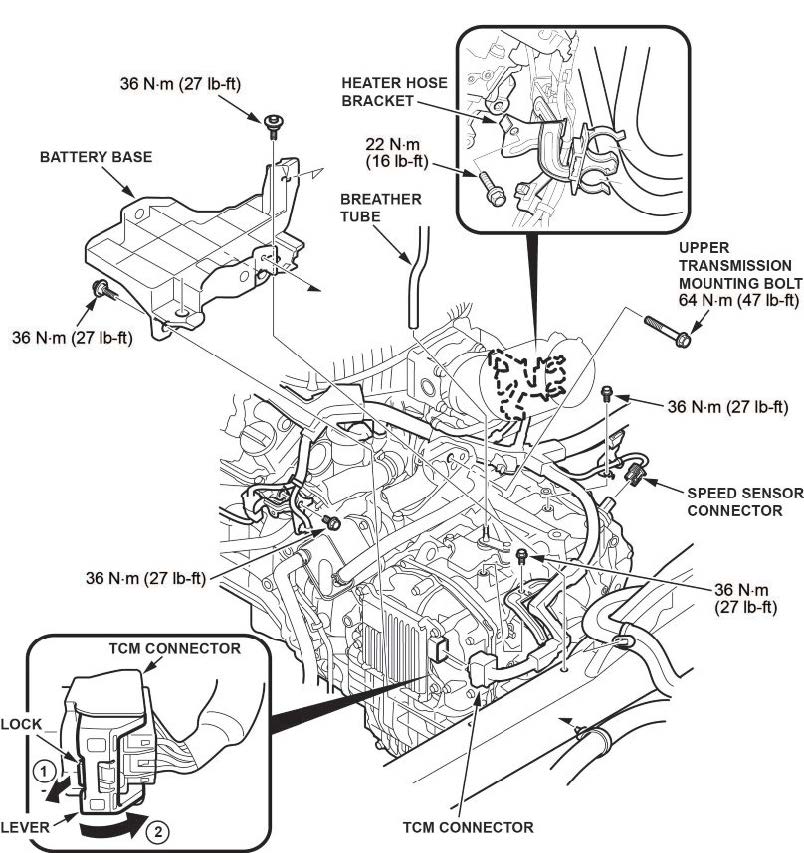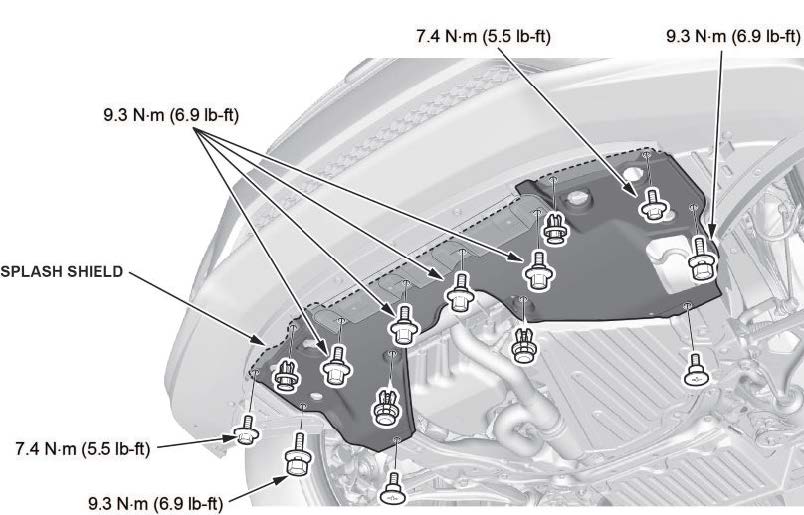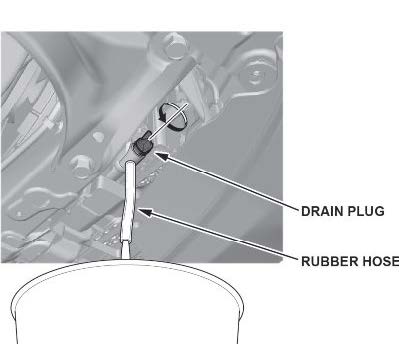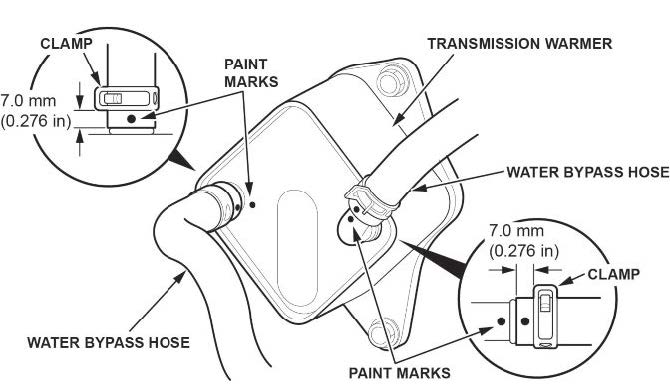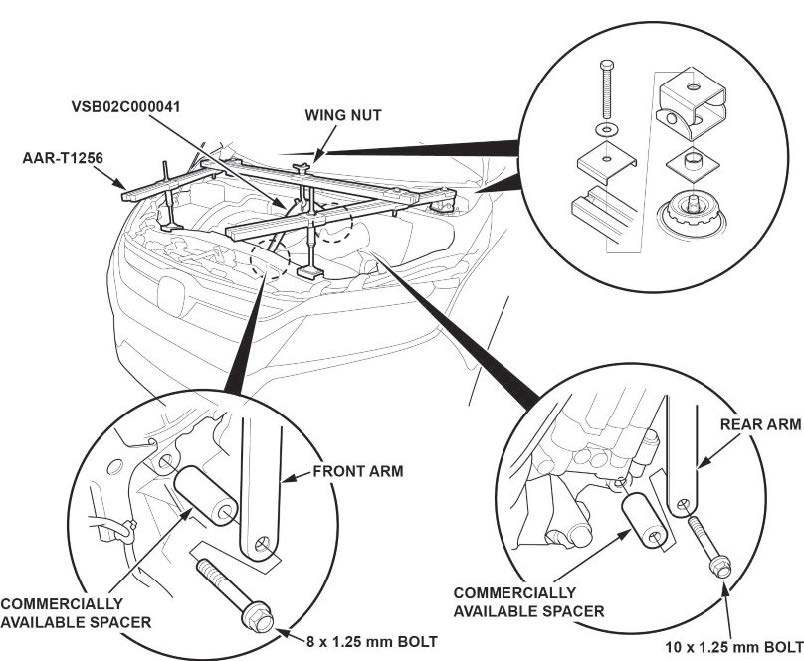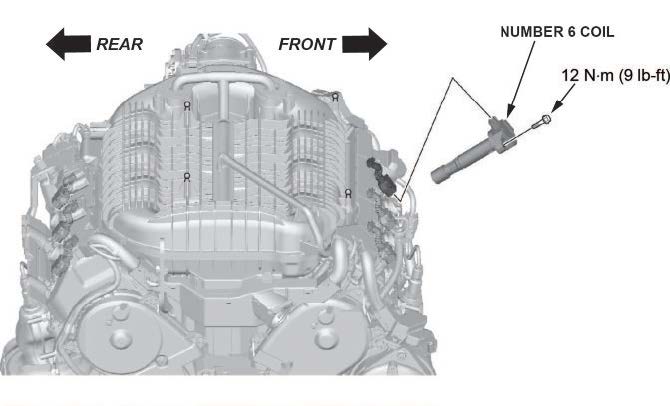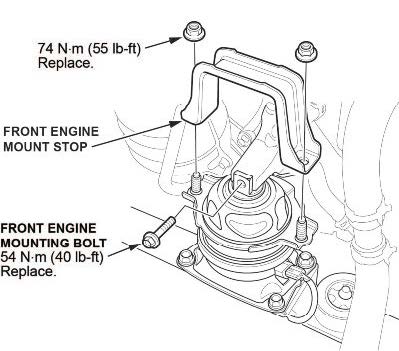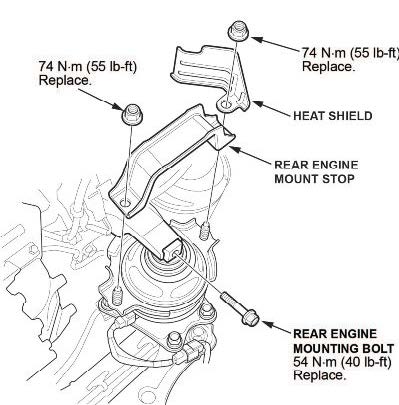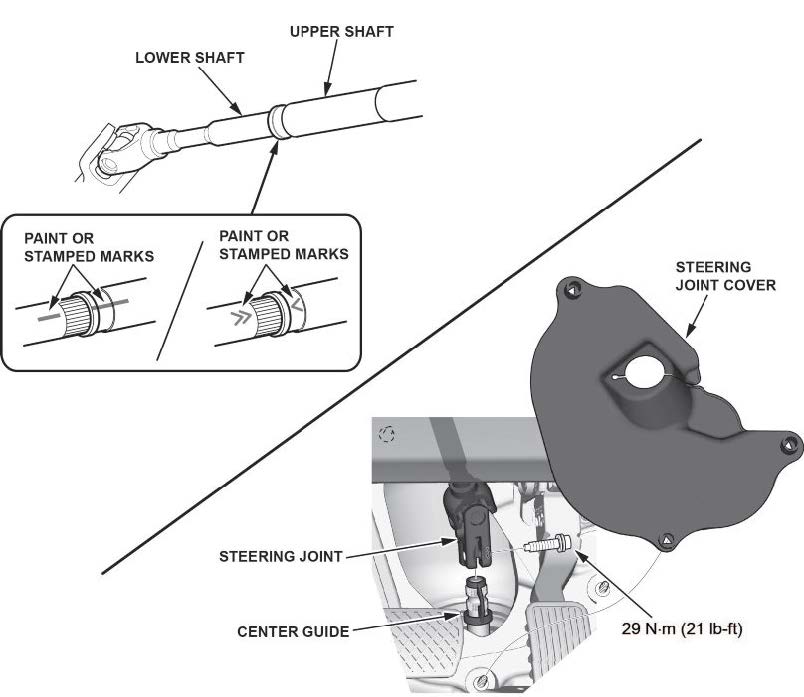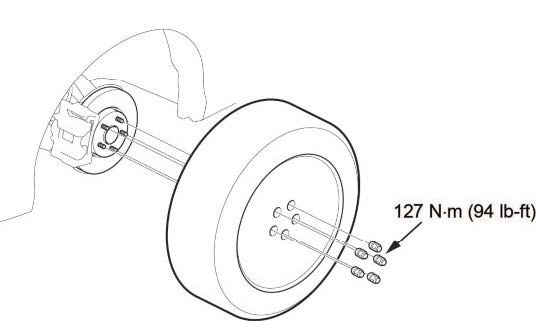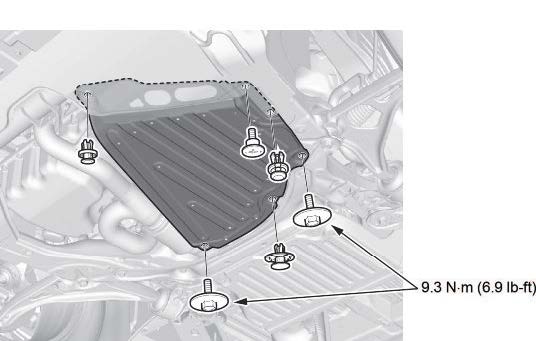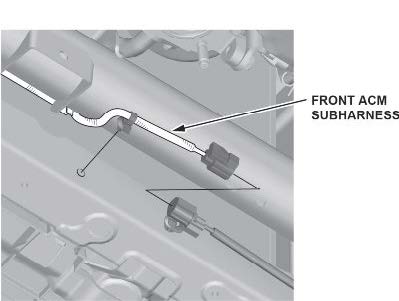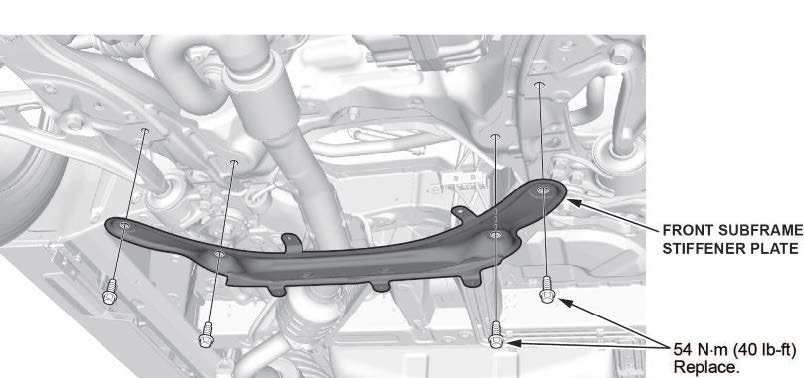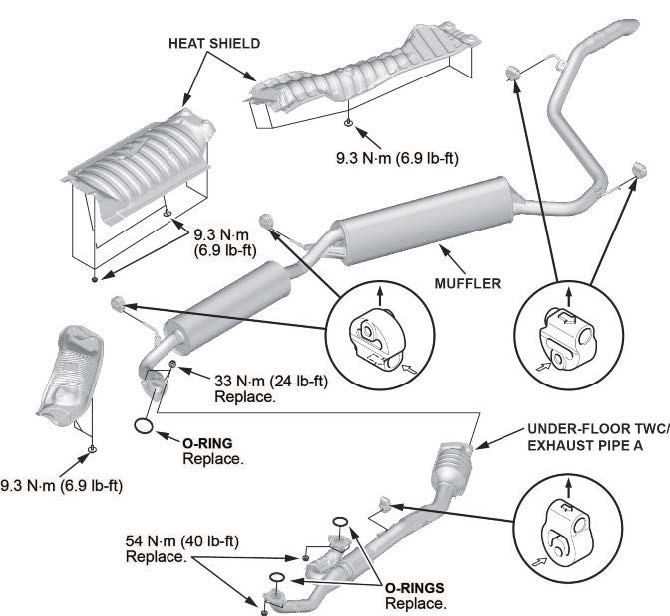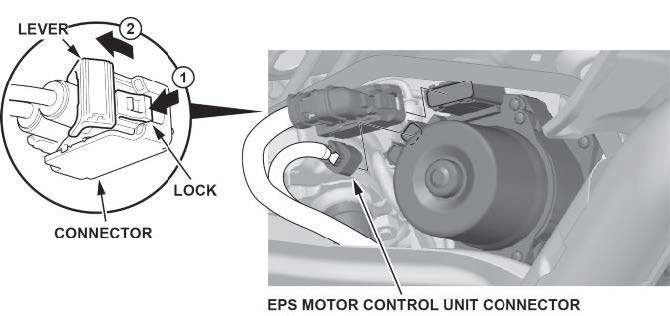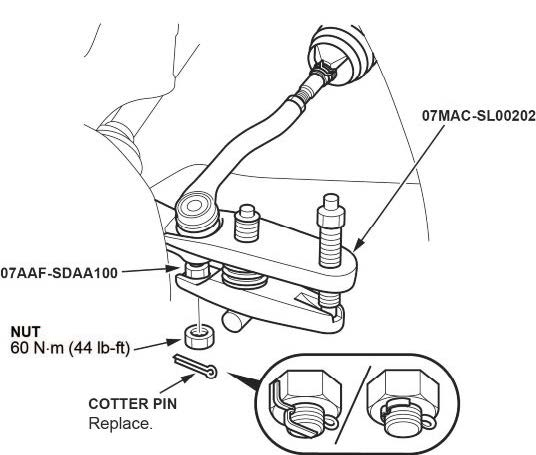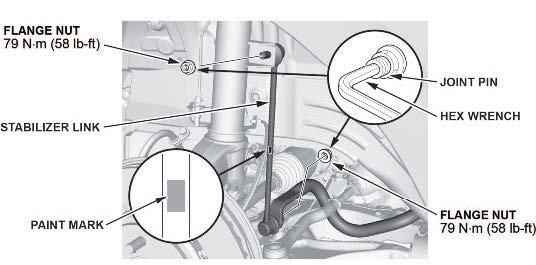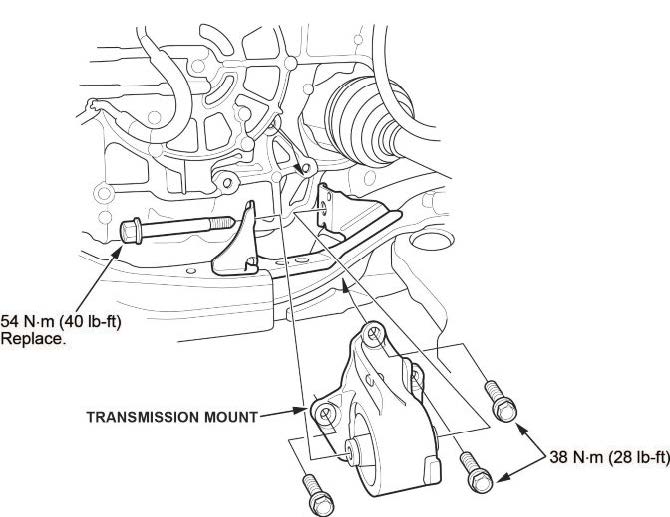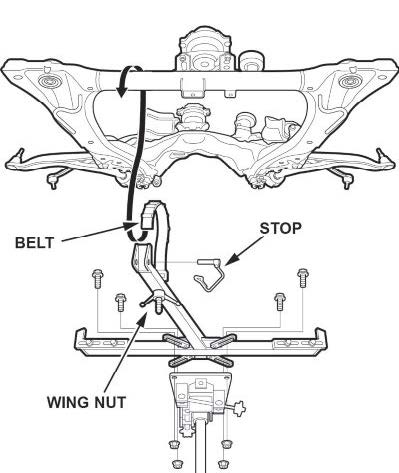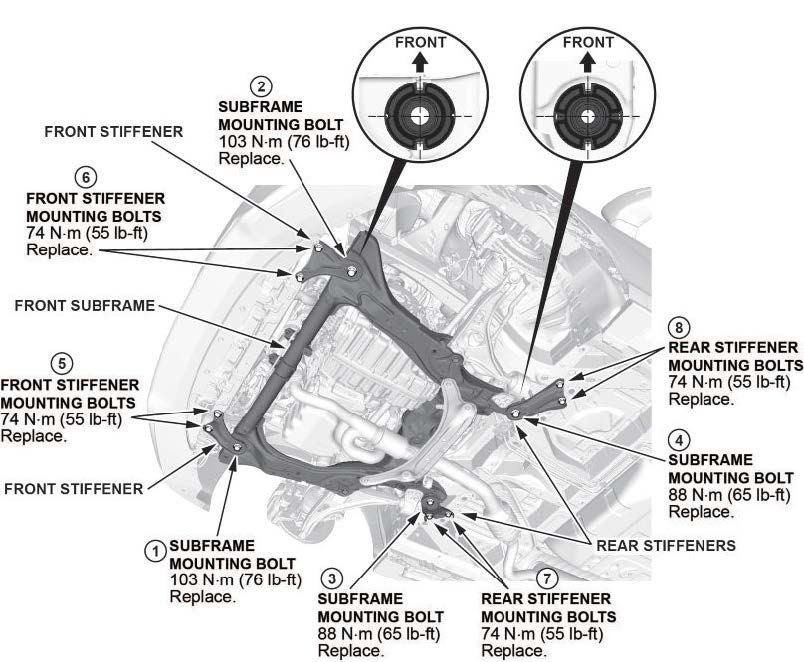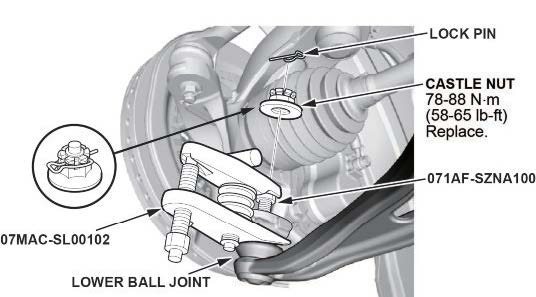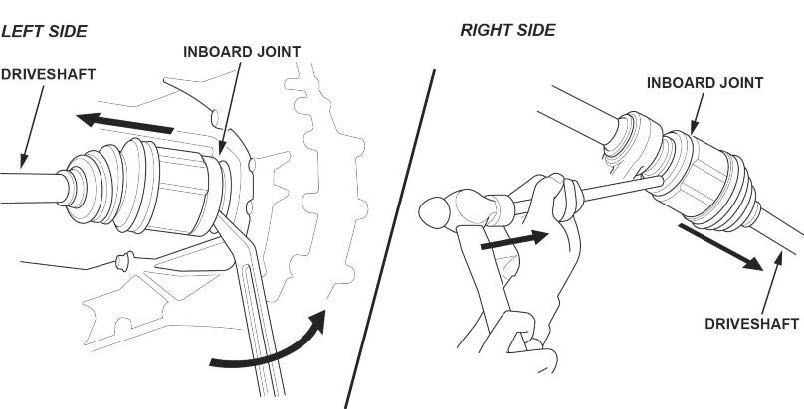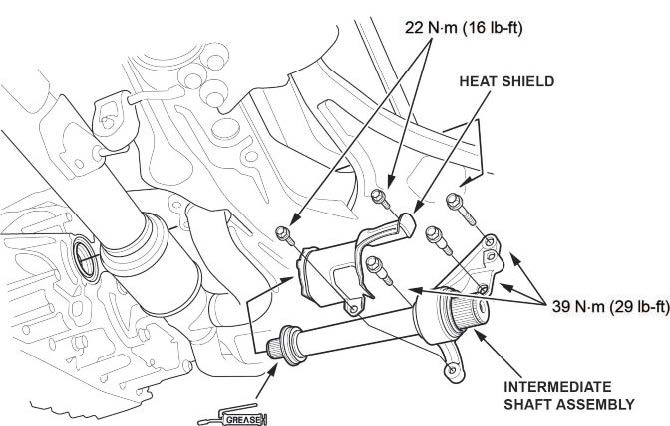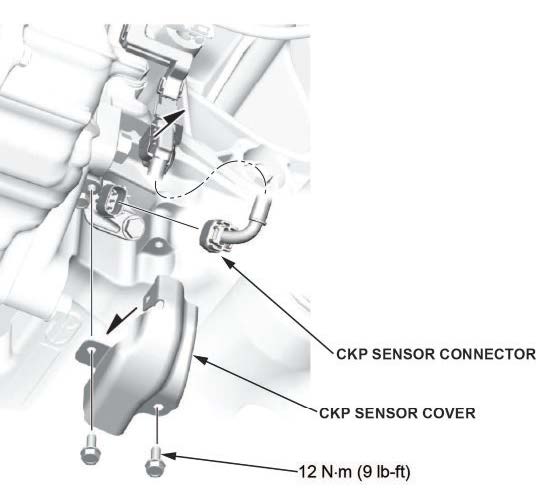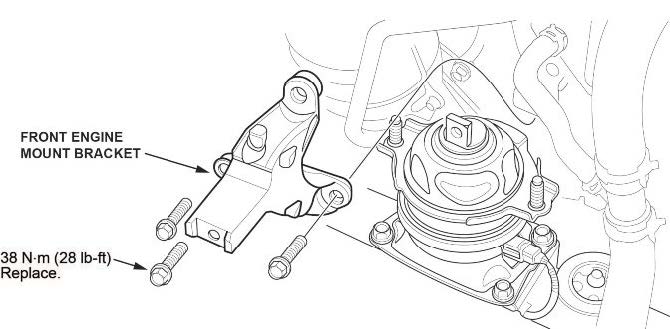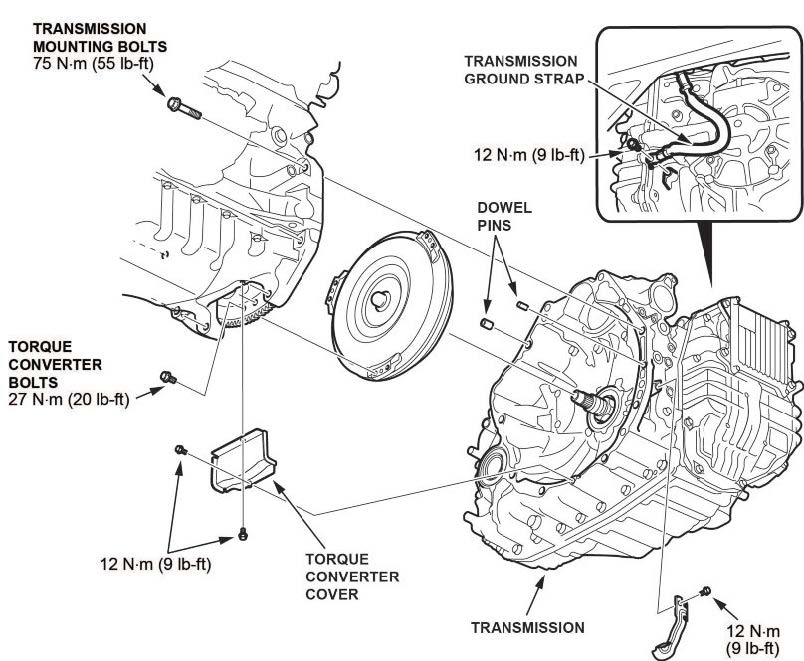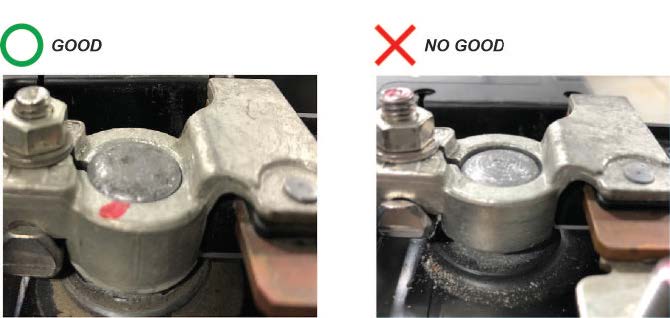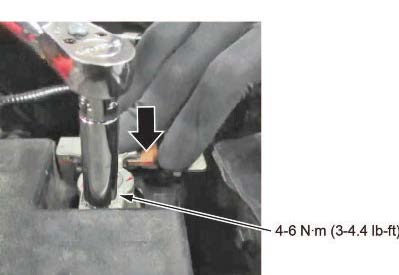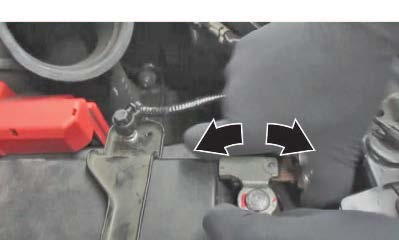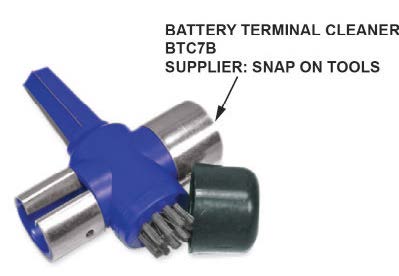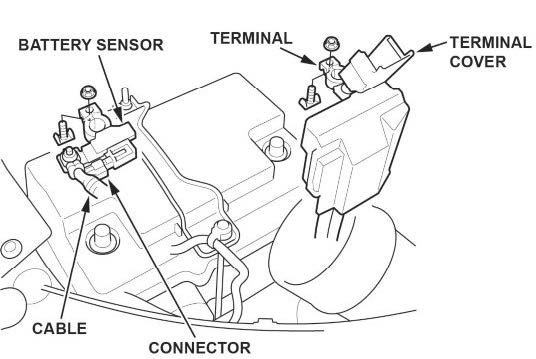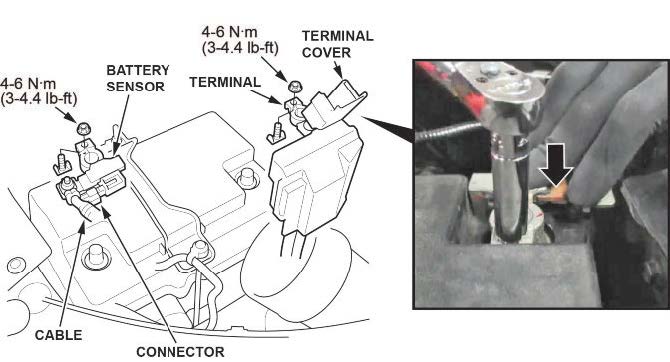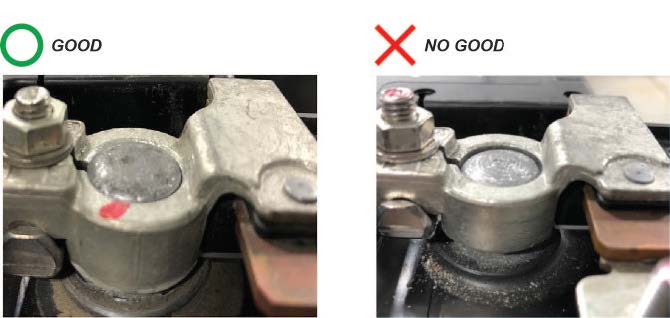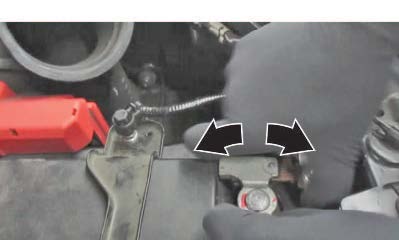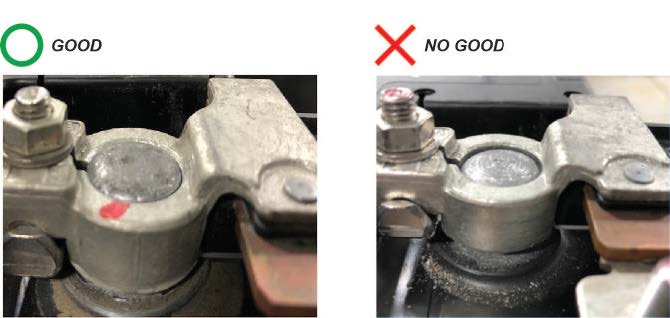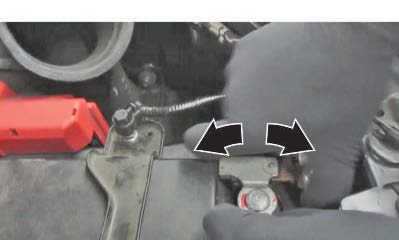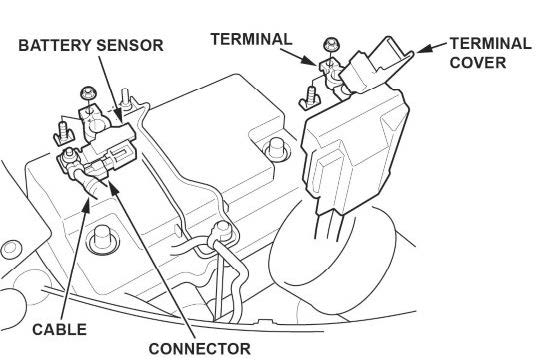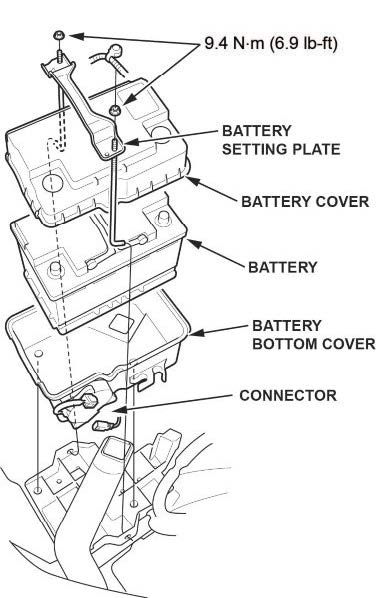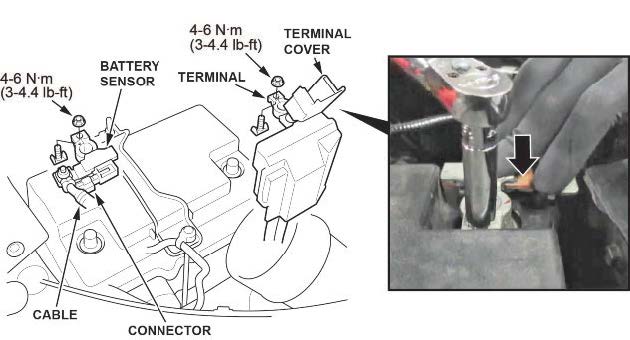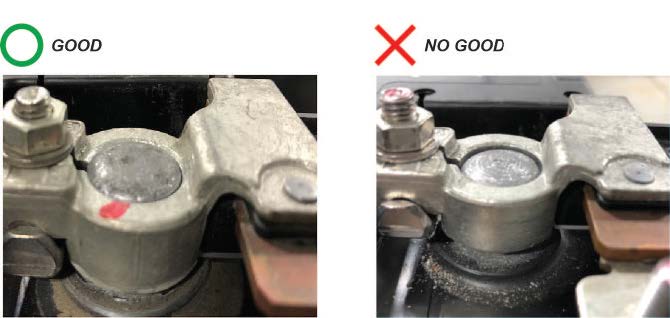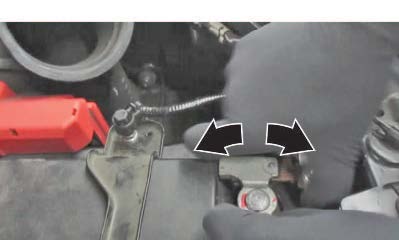| “This site contains affiliate links for which OEMDTC may be compensated” |
April 12, 2019
Loose Battery Terminal Connections
A damaged parking rod can allow the vehicle to roll when parked, increasing the risk of a crash or injury.
NHTSA Campaign Number: 19V299
Manufacturer Honda (American Honda
(American Honda Motor Co.)
Motor Co.)
Components POWER TRAIN, ELECTRICAL SYSTEM
Potential Number of Units Affected 50,504
Summary
Honda (American Honda
(American Honda Motor Co.) is recalling certain 2018-2019 Odyssey vehicles. Loose battery terminal connections or a degraded battery may cause the Transmission Control Unit (TCU) to unexpectedly reboot. Upon rebooting, the TCU may shift the transmission to the “Park” position, possibly damaging the parking rod.
Motor Co.) is recalling certain 2018-2019 Odyssey vehicles. Loose battery terminal connections or a degraded battery may cause the Transmission Control Unit (TCU) to unexpectedly reboot. Upon rebooting, the TCU may shift the transmission to the “Park” position, possibly damaging the parking rod.
Remedy
Honda will notify owners, and dealers will ensure the battery terminal connections are secure and will update the TCU software, free of charge. Additionally, the parking rod effectiveness will be checked. The recall began May 31, 2019. Owners may contact Honda
will notify owners, and dealers will ensure the battery terminal connections are secure and will update the TCU software, free of charge. Additionally, the parking rod effectiveness will be checked. The recall began May 31, 2019. Owners may contact Honda customer service at 1-888-234-2138. Honda
customer service at 1-888-234-2138. Honda ’s numbers for this recall are Z4J, Y4K.
’s numbers for this recall are Z4J, Y4K.
Notes
Owners may also contact the National Highway Traffic Safety Administration Vehicle Safety Hotline at 1-888-327-4236 (TTY 1-800-424-9153), or go to www.safercar.gov.
Check if your Honda has a Recall
Service Bulletin
A19-046
June 13, 2019
Version 4
Safety Recall: 2018-19 Odyssey Check Park Mechanism (Snapshot Upload Required), Battery Terminal Inspection, and Update TCM
Supersedes 19-046 Safety Recall: 2018-19 Odyssey Check Park Mechanism, Battery Terminal Inspection, and Update TCM, dated May 24, 2019, to revise the information highlighted in yellow
AFFECTED VEHICLES
| Year | Model | Trim | VIN Range |
| 2018-19 | Odyssey | Touring, Elite | Check the iN VIN status for eligibility. |
REVISION SUMMARY
Revised title and added notes to emphasize the need for a snapshot upload.
BACKGROUND
A momentary voltage loss to the TCM, usually caused by a loose battery terminal, can cause the transmission to shift to Park while driving. When this happens, the parking mechanism could get damaged, and the vehicle may move while the shifter is in Park.
CUSTOMER NOTIFICATION
Owners of affected vehicles will be sent a notification of this campaign.
Do an iN VIN status inquiry to make sure the vehicle is shown as eligible.
Some vehicles affected by this campaign may be in your new or used vehicle inventory.
Failure to repair a vehicle subject to a recall or campaign may subject your dealership to claims or lawsuits from the customer or anyone else harmed as a result of such failure. To see if a vehicle in inventory is affected by this safety recall, do a VIN status inquiry before selling it.
CORRECTIVE ACTION
- Inspect the transmission’s ability to stay in Park (requires an assistant and snapshot upload).
NOTE
You need to send three snapshots of the inspection procedure results to Tech Line. If they are not sent, your claim will be debited and you will need to repeat this procedure at your dealership’s expense.
- Replace the transmission if the park inspection procedure fails.
- Inspect the battery terminals.
- Clean or replace the terminals and/or battery if the terminal inspection fails (an extremely small percentage of vehicles may require a new battery or battery terminals).
- Update the TCM (not required if transmission is replaced).
NOTE
If an error occurs during the update, go to TCM UPDATE ERROR.
PARTS INFORMATION (REPAIR PROCEDURE A)
| Part Name | Part Number | Quantity |
| Battery Plus Terminal (large) | 32413-TG7-A02 | 1 |
| Battery Sensor Assembly | 38920-TZ5-A02 | 1 |
| (L3) Johnson MSDS Battery Assembly | 31500-TZ7-AGM100M | 1 |
PARTS INFORMATION (REPAIR PROCEDURE B)
| Part Name | Part Number | Quantity |
| Reman A/T Kit (2019 models ) | 06200-5MX-A83RM | 1 |
| Reman A/T Kit (2018 models) | 06200-5MX-A77RM | 1 |
| Flange Bolt (12 x 120) | 90051-5J4-000 | 1 |
| Flange Bolt (12 x 45) | 90165-SDA-A00 | 2 |
| Flange Bolt (12 x 85) | 95701-12085-07 | 1 |
| Flange Nut (12 mm) | 90371-SAA-010 |
4 |
| Flange Bolt (10 x 35) | 90163-SDA-A01 | 2 |
| Flange Bolt (10 x 103) | 90163-SJH-000 | 1 |
| Flange Bolt (10 x 25) | 90167-SAA-010 | 4 |
| Self-Lock Nut (10 mm) | 90212-SA5-003 |
9 |
| Pre Chamber Gasket | 18393-SDB-A00 |
1 |
| Exhaust Pipe Gasket (NOK) | 18212-SA7-003 |
2 |
| Split Pin (3.0 x 22) | 94201-30220 |
2 |
| Castle Nut (14 mm) | 90365-STX-A00 |
2 |
| Flange Bolt (12 x 30) | 90161-SHJ-A00 | 8 |
| Flange Bolt (14 x 140) | 90165-TZ5-A10 | 2 |
| Flange Bolt (14 x 125) | 90165-TK8-A00 | 2 |
| Spindle Nut | 90305-S3V-A11 |
2 |
| Snap Ring (32 x 2.2) | 44319-STX-A01 |
2 |
| Flange Bolt (10 x 30) | 90163-SDB-A00 | 3 |
NOTE
An extremely small percentage of vehicles may require a new battery or battery terminals.
| Part Name | Part Number | Quantity |
| Battery Plus Terminal (large) | 32413-TG7-A02 | 1 |
| Battery Sensor Assembly | 38920-TZ5-A02 | 1 |
| (L3) Johnson MSDS Battery Assembly | 31500-TZ7-AGM100M | 1 |
REQUIRED MATERIALS
| Part Name | Part Number | Quantity |
| Antifreeze/Coolant Type 2 | OL999-9011 |
2 |
TOOL INFORMATION
NOTE
The following tools are available through the Tool and Equipment Program.
| Part Name | Part Number | Quantity |
| Torque Wrench – A 1/4″ torque wrench with a range of 35-53 in/lb. | Model 1501MRH
Model 1501MRPH or any commercially available 1/4″ with range of 35-53 in/lb |
1 |
Battery Terminal Cleaner
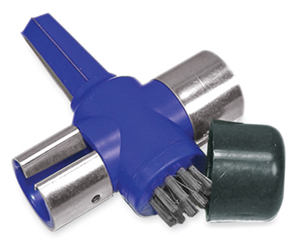 |
BTC7B | 1 |
| Engine Balance Bar | VSB02C000041 | 1 |
| Engine Hanger | AAR-T1256 | 2 |
| Subframe Adaptor | VSB02C000016 | 1 |
WARRANTY CLAIM INFORMATION
The normal warranty applies.
REPAIR PROCEDURE A
NOTE
You need to send three snapshots of the inspection process results to Tech Line. If they are not sent, your claim will be debited and you will need to repeat this procedure at your dealership’s expense. The flat rate time includes the time spent to send those snapshots.
| Operation Number |
Description | Flat Rate Time |
Defect Code |
Symptom Code |
Template ID |
Failed Part Number |
| 7105B6 | Do the park inspection procedure (includes time for assistant). Inspect the battery terminals, and check torque. Update the TCM. | 0.8 hr | 6AN00 | Z4J00 | A19046A | 28102-5MX-A610 |
| 7105B7 | Do the park inspection procedure (includes time for assistant). Repair one terminal. Update the TCM. | 0.9 hr | 6AN00 | Z4J00 | A19046B | 28102-5MX-A610 |
| 7105B7 | Do the park inspection procedure (includes time for assistant). Replace positive terminal. Update the TCM. | 0.9 hr | 6AN00 | Z4J00 | A19046C | 28102-5MX-A610 |
| 7105B8 | Do the park inspection procedure (includes time for assistant). Replace negative terminal. Update the TCM. | 1.1 hr | 6AN00 | Z4J00 | A19046A | 28102-5MX-A610 |
| 7105B8 | Do the park inspection procedure (includes time for assistant).
Repair both terminals. Update the TCM. |
1.1 hr | 6AN00 | Z4J00 | A19046D | 28102-5MX-A610 |
| 7105B8 | Do the park inspection procedure (includes time for assistant). Replace both terminals. Update the TCM. | 1.1 hr | 6AN00 | Z4J00 | A19046E | 28102-5MX-A610 |
| 7105B9 | Do the park inspection procedure (includes time for assistant). Install new battery (Includes internal resistance reset). Update the TCM. | 1.6 hr | 6AN00 | Z4J00 | A19046F | 28102-5MX-A610 |
REPAIR PROCEDURE B
NOTE
You need to send three snap shots of the inspection process results to Tech Line. If they are not sent, your claim will be debited and you will need to repeat this procedure at your dealership’s expense. The flat rate time includes the time spent to send those snapshots.
| Operation Number |
Description | Flat Rate Time |
Defect Code |
Symptom Code |
Template ID |
Failed Part Number |
| 2185E0 | 2018 Odyssey –Do the park inspection procedure (includes time for assistant). Replace the transmission (includes alignment and neutral position memorization. Inspect battery terminals, and check torque. | 7.5 hr | 6AN00 | Z4J00 | A19046G | 28102-5MX-A610 |
| 2185E0 | 2019 Odyssey –Do the park inspection procedure (includes time for assistant). Replace the transmission (includes alignment and neutral position memorization. Inspect battery terminals, and check torque. | 7.5 hr | 6AN00 | Z4J00 | A19046H | 28102-5MX-A610 |
| 2185E1 | 2018 Odyssey – Do the park inspection procedure (includes time for assistant). Replace the transmission (Includes alignment and neutral position memorization). Repair one terminal. | 7.6 hr | 6AN00 | Z4J00 | A19046J | 28102-5MX-A610 |
| 2185E1 | 2018 Odyssey – Do the park inspection procedure (includes time for assistant). Replace the transmission (Includes alignment and neutral position memorization). Replace positive terminal. | 7.6 hr | 6AN00 | Z4J00 | A19046K | 28102-5MX-A610 |
| 2185E1 | 2018 Odyssey – Do the park inspection procedure (includes time for assistant). Replace the transmission (Includes alignment and neutral position memorization). Replace negative terminal. | 7.6 hr | 6AN00 | Z4J00 | A19046B | 28102-5MX-A610 |
| 2185E1 | 2019 Odyssey – Do the park inspection procedure (includes time for assistant). Replace the transmission (Includes alignment and neutral position memorization). Repair one terminal. | 7.6 hr | 6AN00 | Z4J00 | A19046L | 28102-5MX-A610 |
| 2185E1 | 2019 Odyssey – Do the park inspection procedure (includes time for assistant). Replace the transmission (Includes alignment and neutral position memorization). Replace positive terminal. | 7.6 hr | 6AN00 | Z4J00 | A19046M | 28102-5MX-A610 |
| 2185E1 | 2019 Odyssey – Do the park inspection procedure (includes time for assistant). Replace the transmission (Includes alignment and neutral position memorization). Replace negative terminal. | 7.6 hr | 6AN00 | Z4J00 | A29046C | 28102-5MX-A610 |
| 2185E2 | 2018 Odyssey – Do the park inspection procedure (includes time for assistant). Replace the transmission (Includes alignment and neutral position memorization). Repair both terminals. | 8.0 hr | 6AN00 | Z4J00 | A19046N | 28102-5MX-A610 |
| 2185E2 | 2018 Odyssey – Do the park inspection procedure (includes time for assistant). Replace the transmission (Includes alignment and neutral position memorization). Replace both terminals. | 8.0 hr | 6AN00 | Z4J00 | A19046P | 28102-5MX-A610 |
| 2185E2 | 2019 Odyssey – Do the park inspection procedure (includes time for assistant). Replace the transmission (Includes alignment and neutral position memorization). Repair both terminals. | 8.0 hr | 6AN00 | Z4J00 | A19046Q | 28102-5MX-A610 |
| 2185E2 | 2019 Odyssey – Do the park inspection procedure (includes time for assistant). Replace the transmission (Includes alignment and neutral position memorization). Replace both terminals. | 8.0 hr | 6AN00 | Z4J00 | A19046R | 28102-5MX-A610 |
| 2185E3 | 2018 Odyssey – Do the park inspection procedure (includes time for assistant). Replace the transmission (Includes alignment and neutral position memorization). Repair both terminals, and replace the battery (includes internal resistance reset). | 8.5 hr | 6AN00 | Z4J00 | A19046S | 28102-5MX-A610 |
| 2185E3 | 2018 Odyssey – Do the park inspection procedure (includes time for assistant). Replace the transmission (Includes alignment and neutral position memorization). Replace both terminals, and replace the battery (includes internal resistance reset). | 8.5 hr | 6AN00 | Z4J00 | A19046T | 28102-5MX-A610 |
| 2185E3 | 2019 Odyssey – Do the park inspection procedure (includes time for assistant). Replace the transmission (Includes alignment and neutral position memorization). Repair both terminals, and replace the battery (includes internal resistance reset). | 8.5 hr | 6AN00 | Z4J00 | A19046U | 28102-5MX-A610 |
| 2185E3 | 2019 Odyssey – Do the park inspection procedure (includes time for assistant). Replace the transmission (Includes alignment and neutral position memorization). Replace both terminals, and replace the battery (includes internal resistance reset). | 8.5 hr | 6AN00 | Z4J00 | A19046V | 28102-5MX-A610 |
Skill Level: Repair Technician
SOFTWARE INFORMATION
NOTE
Unnecessary or incorrect repairs resulting from a failure to update the i-HDS are not covered under warranty. i-HDS Software Version: 1.004.064 or later
J2534 Software Information: 1.00.0020
- PC Application Version 1.0.6 or later
- Database update 06-APR-2019 or later
Before beginning the repair, make sure that both the i-HDS and J2534 software are updated as listed above.
Do only the update listed in this service bulletin.
You cannot apply the updates with the MVCI as a standalone tool. To update the software you must use the MVCI or the DST-i interface in conjunction with the J2534 Rewrite PC application on the i-HDS.
For more information about updating the i-HDS, the MVCI, and vehicle systems, refer to Service Bulletin 01-023, Updating Control Units/Modules.
If the program P/N in the vehicle is above (or later), the vehicle has been updated and this service bulletin does not apply, continue with normal troubleshooting.
Connect the i-HDS and go to AT Data List. Check to see if the software has been updated by comparing the program P/N against the table below.
- 2018 models: If the program P/N currently in the AT Data List is not the same or later as in the chart below, the vehicle has not been updated. Go to PARK INSPECTION PROCEDURE.
- 2019 models: If the program P/N currently in the AT Data List reads 28102-5MX-A700 or 28102-5MX-A710, the vehicle has not been updated. Go to PARK INSPECTION PROCEDURE.
| Year/Model | Software System | Program ID (or later) | Program P/N (or later) |
| 2018 | A/T | MXA610 | 28102-5MX-A610 |
| 2019 | A/T | MXA001 | 28102-5MX-A001 |
NOTICE
- Connect a fully charged jump box to the battery before updating the TCM. Failure to do so may damage the TCM, requiring transmission replacement.
- To prevent damaging the TCM, do not operate anything electrical (headlights, audio system, brakes, A/C, power windows, door locks, etc.) during the update.
NOTE
If an error occurs during the update, go to TCM UPDATE ERROR.
PARK INSPECTION PROCEDURE
NOTES
- This step is critical. Make sure the park pawl is properly engaging by rocking the vehicle back and forth. See example videos.
- You will need an assistant and a surface with good traction to reach the amount of g-force needed to do this inspection.
- You need to send three snap shots of the process to Tech Line. If they are not sent, your claim will be debited and you will need to repeat this procedure at your dealership’s expense.
NOTE
The blue component is the park pawl; the red component is the park gear.
Click on the images for example videos.
- Park on a flat area with the ignition turned to ON and the parking brake released.
NOTE
Make sure the surface provides good traction. If the wheels slip, you may not be able to get the 0.30 G/ 2.9 m/s² force to complete the check.
- Connect the i-HDS, then enter the RO, and select System Selection Menu.
- Select ABS/VSA.
- Select Snapshot.
- Clear all monitor signals from the list.
- Add LONGITUDINAL ACCELERATION SENSOR only.
- Select the check mark.
- Select the line graph.
- Set up the vehicle for snapshots.
-
- Close all doors, and open all windows.
- Place a fender cover over the rear doors to protect the paint.
- Do not use the interior grab handle or exterior door handle.
- With help from an assistant, rock the vehicle back and forth by pushing and pulling on the B-pillar with maximum force while monitoring LONGITUDINAL ACCELERATION SENSOR in the data list.
NOTE
An assistant and a surface with good traction is necessary to obtain the force needed for the inspection.
- Start the snapshot, and rock the vehicle back and forth with maximum force until you get at least five peak counts at or above 30 G/2.9 m/s². Once you get five counts, stop rocking the vehicle and wait for the snapshot to complete.
- Once the snapshot is complete, save it.
- Select the open folder to review the snapshot.
Did the vehicle stay in Park while you got at least five counts above 0.30 G//2.9 m/s²?
NOTE
The parameter display can be changed by selecting the current display unit.
Yes – Send the snapshot to Tech Line using the RO number, then go to step 13. If it stayed in Park but you failed to get at least five peak counts of or above 0.30 G/2.9 m/s², make sure the vehicle is on a surface with good traction. Then, repeat steps 10 thru 12.
No – If it did not hold in Park, send the snapshot to Tech Line using the RO number, then go to REPAIR
PROCEDURE B.
- Remove the wheel chock, shift to Drive, move the vehicle about one foot, then shift back to Park.
- Repeat steps 9 thru 13 two more times.
NOTE
Make sure you send all three snapshots to Tech Line using the RO number. You will not need to contact Tech Line, but claims with no snapshots are subject to debit.
- Did the vehicle hold in park while you got at least five counts above 30 G/2.9 m/s² in all three of the park inspection procedures?
Yes – Go to REPAIR PROCEDURE A.
No – Go to REPAIR PROCEDURE B.
REPAIR PROCEDURE A
NOTICE
- Battery terminal installation on this vehicle is critical. Failure to follow the terminal installation, or inspection procedures could cause electrical problems, stalling, and/or DTCs to set. Do not over torque the terminals, and do not use an impact gun.
- Battery terminal installation must be level or below the post. See GOOD and NO GOOD example pictures.
- Remove the front bulkhead cover.
- Remove the air intake duct.
- Compare both battery terminals to the examples below.
Do the battery terminals look like the good example?
Yes – Go to step 4.
No – Go to TERMINAL REPAIR.
- While holding down the terminal, torque both positive and negative clamps to 4-6 N•m (35-53 lb-in)
NOTE
Do not over torque the terminal.
- Make sure the connection is tight by wiggling the terminals back and forth.
Are both terminals secure?
Yes – Apply multipurpose grease to the terminals to prevent corrosion, and install the air intake duct and the bulkhead cover. Then, go to TCM UPDATE.
No – Go to TERMINAL REPAIR.
TERMINAL REPAIR
- Remove the terminal or terminals and clean the post using an approved battery terminal cleaner.
1.1 Make sure the ignition is turned to OFF.
1.2 Disconnect and isolate the negative cable with the battery sensor from the battery.
NOTES
- Always disconnect the negative side first.
- To prevent damage to the connector, do not hold it when removing the battery terminal.
- Do not disconnect the battery sensor from the cable.
1.3 Open the terminal cover.
1.4 Disconnect the terminal from the battery.
- While holding down the terminal, torque both positive and negative clamps to 4-6 N•m (35-53 lb-in).
NOTES
- Do not over torque the terminal.
- Always connect the positive side first.
- Compare both of the battery terminals to the examples below.
Do the battery terminals look like the good example?
Yes – Go to step 4.
No – Go to REPLACE BATTERY TERMINAL.
- Make sure the connection is tight by wiggling the terminals back and forth.
Are both terminals secure?
Yes – Apply multipurpose grease to the terminals to prevent corrosion, and install the air intake duct and the bulkhead cover. Then, go to TCM UPDATE
No – Go to REPLACE BATTERY TERMINAL.
REPLACE BATTERY TERMINAL
- Remove the battery terminal that does not sit at or below the top of the post.
- Install a new terminal, and torque the clamp nut to 4-6 N•m (35-53 lb-in) while holding it down.
NOTES
- Always disconnect the negative side first.
- To prevent damage to the connector, do not hold it when removing the battery terminal.
- Do not disconnect the battery sensor from the cable.
- Compare both of the battery terminals to the examples below.
Do the battery terminals look like the good example?
Yes – Go to step 4.
No – Go to BATTERY REPLACEMENT, BATTERY RESISTANCE RESET PROCEDURE.
- Make sure the connection is tight by wiggling the terminals back and forth.
Are both terminals secure?
Yes – Apply multipurpose grease to the terminals to prevent corrosion, and install the air intake duct and the bulkhead cover. Then, go to TCM UPDATE.
No – Go to BATTERY REPLACEMENT, BATTERY RESISTANCE RESET PROCEDURE.
BATTERY REPLACEMENT, BATTERY RESISTANCE RESET PROCEDURE
- Disconnect the battery terminals.
1.1 Make sure the ignition is turned to OFF.
1.2 Disconnect and isolate the negative cable with the battery sensor from the battery.
NOTES
- Always disconnect the negative side first.
- To prevent damage to the connector, do not hold it when removing the battery terminal.
- Do not disconnect the battery sensor from the cable.
1.3 Open the terminal cover.
1.4 Disconnect the terminal from the battery.
- Install a new battery. Then reinstall the battery cover, and the setting plate in the reverse order of removal.
- While holding down the terminal, torque both positive and negative clamps to 4-6 N•m (35-53 lb-in).
NOTES
- Do not over torque the terminal.
- Always connect the positive side first.
- Compare both of the battery terminals to the examples below.
Do the battery terminals look like the good example?
Yes – Go to step 9.
No – Remove and reinstall the terminals, then go to step 7.
- Make sure the connection is tight by wiggling the terminals back and forth.
Are both terminals secure?
Yes – Apply multipurpose grease to the terminals to prevent corrosion. Then, go to BATTERY INTERNAL RESISTANCE RESET.
No – Remove and reinstall the terminals, and go to step 7.
BATTERY INTERNAL RESISTANCE RESET
NOTE
Do this procedure only if the battery was replaced.
- Make sure all electrical systems (A/C, audio, lights, etc) are turned off.
- Turn the ignition to OFF.
- Turn the ignition to ACCESSORY.
- Turn the ignition to ON.
- Start the engine, and let it idle for 1 minute or more.
- Turn the ignition to OFF.
- Repeat steps 3 thru 6 at least four times.
NOTE
The internal resistance of the battery may not be updated if the engine starts up immediately from the OFF position.
It has to go through the ACCESSORY and ON position.
- Turn the ignition to ON.
- Connect the i-HDS and select PGM-FI.
- Check IDLE STOP INHIBIT (BATTERY DETERIORATION) in the Data List.
Normal – The battery internal resistance test is complete.
INHIBITED – Replace the battery, then do this battery internal resistance reset procedure again.
- Turn the ignition to OFF, and disconnect the i-HDS.
- Install the air intake duct and bulkhead cover.
- Go to TCM UPDATE.
TCM UPDATE
NOTE
Unnecessary or incorrect repairs resulting from a failure to update the i-HDS are not covered under warranty. i-HDS Software Version: 1.004.064 or later
J2534 Software Information: 1.00.0020
- PC Application Version 1.0.6 or later
- Database update 06-APR-2019 or later
Before beginning the repair, make sure that both the i-HDS and J2534 software are updated as listed above.
Do only the update listed in this service bulletin.
You cannot apply the updates with the MVCI as a standalone tool. To update the software you must use the MVCI or the DST-i interface in conjunction with the J2534 Rewrite PC application on the i-HDS.
For more information about updating the i-HDS, the MVCI, and vehicle systems, refer to Service Bulletin 01-023, Updating Control Units/Modules.
If the program P/N in the vehicle is above (or later), the vehicle has been updated and this service bulletin does not apply, continue with normal troubleshooting.
Connect the i-HDS and go to AT Data List. Check to see if the software has been updated by comparing the program P/N against the table below.
- 2018 models: If the program P/N currently in the AT Data List is not the same or later as in the chart below, the vehicle has not been updated. Update the TCM.
- 2019 models: If the program P/N currently in the AT Data List reads 28102-5MX-A700 or 28102-5MX-A710, the vehicle has not been updated. Update the TCM.
| Year/Model | Software System | Program ID (or later) | Program P/N (or later) |
| 2018 | A/T | MXA610 | 28102-5MX-A610 |
| 2019 | A/T | MXA710 | 28102-5MX-A001 |
NOTICE
- Connect a fully charged jump box on the battery before updating the TCM. Failure to do so may damage the TCM, requiring transmission replacement.
- To prevent damaging the TCM, do not operate anything electrical (headlights, audio system, brakes, A/C, power windows, door locks, etc.) during the update.
Update the TCM software using the i-HDS J2534 rewrite software with the MVCI or DST-i. Refer to Service Bulletin 01-023, Updating Control Units/Modules.
NOTE
If an error occurs during the update, go to TCM UPDATE ERROR.
TCM UPDATE ERROR
NOTICE
- Do not disconnect the battery or turn the ignition completely to OFF (IGN 0). You may damage the TCM.
- When this error occurs, the MID information may be confusing. Pressing the ENGINE START/STOP button twice will turn the ignition to ACCESSORY, and holding it will turn the ignition to OFF. Do not press and hold the ENGINE START/STOP button, or turn the ignition to OFF during the update.
If there is an interruption during the update process, you will get the following messages on the i-HDS and MID. Do not disconnect the battery or the i-HDS.
Cycle the ignition twice; this will put the vehicle in ACC mode. Then cycle the ignition one more time to turn it to ON.
Then, do the update.
NOTE
The MID is showing partially incorrect information when this error occurs. Pressing the ignition button twice will turn it to ACC mode, and holding the ignition button will turn the ignition OFF. Do not press and hold, or turn off the ignition during the update.
REPAIR PROCEDURE B
NOTE
Do not drain the ATF from the old transmission. The replacement (Reman) transmission comes pre-filled with ATF.
- Remove the engine cover.
- Remove the bulkhead cover.
- Remove the air intake duct.
- Remove the air guide.
- Disconnect the battery terminals.
5.1 Make sure the ignition is turned to OFF.
5.2 Disconnect and isolate the negative cable with the battery sensor from the battery.
NOTES
- Always disconnect the negative side first.
- To prevent damage to the connector, do not hold it when removing the battery terminal.
- Do not disconnect the battery sensor from the cable.
5.3 Open the terminal cover.
5.4 Disconnect the terminal from the battery.
- Remove the setting plate.
- Remove the battery cover.
- Remove the battery.
- Remove the battery bottom cover.
- Disconnect the battery fan motor connector.
- Move the intake air duct.
- Remove the air cleaner.
- Remove the skid block.
- Disconnect the positive cable from the starter.
- Remove the starter and connector.
- Remove the battery base.
- Disconnect the breather tube.
- Disconnect the TCM connector.
- Remove the upper transmission mounting bolt.
- Disconnect the speed sensor.
- Remove the heater hose bracket.
- Remove the harness bracket bolts.
- Raise the vehicle on a lift.
- Remove the splash shield.
- Drain the coolant.
25.1 Install a rubber hose on the radiator.
25.2 Loosen the drain plug, and drain the coolant.
- Lower the vehicle.
- Disconnect the water bypass hoses from the transmission warmer.
NOTE
To prevent damage, do not bend the pipes excessively.
- Install the engine support hanger.
NOTES
- Be careful when working around the windshield.
- Two sets of AAR-T1256 are required for stacking additional cross section bars.
- Be careful not to damage the hood opener cable when installing the engine support hanger at the front bulkhead.
28.1 Remove the front damper caps.
28.2 Install the engine hanger balance bar.
28.2.1 Attach the front arm to the front cylinder head with a commercially available spacer and a 10 x 1.25 mm bolt.
28.2.2 Attach the rear arm to the rear cylinder head with a commercially available spacer and a 10 x 1.25 mm bolt.
28.3 Install the engine support hanger as shown, and attach the hook to the slotted hole in the engine hanger balance bar. Tighten the wing nut by hand, and lift and support the engine/transmission.
- Remove coil number 6.
- Remove the front engine mount stop and front engine mount mounting bolt.
- Remove the rear engine mount stop, heat shield, and rear engine mount mounting bolt.
- Disconnect the steering joint.
NOTE
Be careful not to pull out the lower shaft from the upper shaft. If it separates, use the aligning paint or stamped marks on the shafts to align them.
- Lift the vehicle.
- Remove both front wheels.
- Remove the transmission undercover.
- Disconnect the front ACM (active control engine mount) sub harness.
- Remove the front subframe stiffener plate.
- Remove the under-floor TWC and exhaust pipe.
- Disconnect the EPS motor control unit connector.
- Disconnect both tie rod end ball joints.
40.1 Remove the cotter pin.
40.2 Remove the nut.
40.3 Disconnect the tie-rod end ball joint from the knuckle using a ball joint thread protector and a ball joint remover.
NOTES
- Be careful not to damage the ball joint boot when using the ball joint remover.
- During installation, install the new cotter pin after tightening the nut, and bend its end as shown.
- Disconnect both lower stabilizer links.
41.1 Remove the flange nuts while holding the respective joint pin with a hex wrench.
41.2 Remove the stabilizer link.
NOTE
The stabilizer link has a paint mark. The left stabilizer link is marked with green paint, and the right stabilizer link is marked with blue paint.
- Remove the transmission mount.
- Install the front subframe adapter tool.
43.1 Attach the subframe adapter to the front subframe by looping the belt over the front of the front subframe, then secure the belt with its stop, and tighten the wing nut.
43.2 Raise a transmission jack, and line up the slots in the subframe adapter arms with the bolt holes on the transmission jack base. Then, securely attach them with four bolts.
- Remove the front subframe.
NOTES
During installation:
- After loosening the subframe bolts, be sure to replace them with new ones.
- Lift the subframe up to the body, and loosely install the new subfrarme mounting bolts, new front stiffener mounting bolts, front stiffeners, new rear stiffener mounting bolts, and rear stiffeners.
- Tighten the subframe mounting bolts to the torque spec in the numbered sequence shown.
- Check all of the subframe mounting bolts, and tighten them if necessary.
- Support the transmission with a transmission jack.
- Disconnect both lower arm ball joints.
46.1 Remove the lock pin from the lower arm ball joint.
NOTE
During installation, install the lock pin as shown after tightening the castle nut.
46.2 Remove the castle nut.
NOTES
- Use a new castle nut when installing.
- Torque the castle nut to the lower torque specification, then tighten it only far enough to align the slot with the ball joint pin hole. Do not align the castle nut by loosening it.
46.3 Disconnect the lower ball joint from the knuckle using the ball joint thread protector and the ball joint remover.
NOTES
- Be careful not to damage the ball joint boot when installing the ball joint remover.
- During installation do the following:
- Be careful not to damage the ball joint boot when connecting the knuckle.
- Degrease the ball joint before connecting the threaded section and the tapered portion of the ball joint pin, the ball joint connecting hole, the threaded section, and the mating surfaces of the castle nut.
- Disconnect both inner driveline joints.
NOTES
Secure the driveshaft to the body on both sides with a nylon strap.
- Left driveshaft
47.1.1 Pry the inboard joint using a pry bar.
NOTE
Be careful to not damage the oil seal or the end of the inboard joint with a pry bar.
47.1.2 Remove the driveshaft as an assembly.
NOTE
Do not pull on the driveshaft, because the inboard joint may come apart. Pull the inboard joint straight out to avoid damaging the oil seal.
- Right driveshaft
47.2.1 Drive the inboard joint off of the intermediate shaft using a drift punch and a hammer.
47.2.2 Remove the driveshaft as an assembly.
NOTES
- Do not pull on the driveshaft, because the inboard joint may come apart. Pull the inboard joint straight out.
- Use new snap rings when installing the driveshaft.
- Remove the intermediate shaft assembly.
- Disconnect the CKP sensor connector.
- Remove the front engine mount bracket.
- Disconnect the transmission ground strap.
- Remove the torque converter cover.
- Remove the torque converter bolts.
- Remove the remaining transmission mounting bolts.
- Remove the transmission.
- Remove the dowel pins, and install them on the new transmission.
- Install the new transmission.
- Install all removed parts in the reverse order of removal except the intake air duct and the front bulkhead cover. The battery terminals will still need to be inspected.
NOTES
- Make sure to replace all must-replace parts.
- The reman transmission comes prefilled with AT. It does not need to be filled.
- Use new snap rings on drive lines.
- Fill the cooling system with coolant.
At coolant change: 7.4 L (1.90 US gal) with coolant reservoir included.
- Do the keyless access registration.
- Inspect the positive and negative battery terminals.
NOTICE
- Battery terminal installation on this vehicle is critical. Failure to follow the terminal installation or inspection procedures could cause electrical problems, stalling, and/or DTCs to set. Do not over torque the terminals, and do not use an impact gun.
- Battery terminal installation must be level or below the post. See GOOD and NO GOOD example pictures.
Compare both of the battery terminals to the examples below.
Do the battery terminals look like the good example?
Yes – Go to step 62.
No – Go to TERMINAL REPAIR.
- While holding down the terminal, torque both positive and negative clamps to 4-6 N•m (35-53 lb-in).
NOTE
Do not over torque the terminal.
- Make sure the connection is tight by wiggling the terminals back and forth.
Are both terminals secure?
Yes – Apply multipurpose grease to the terminals to prevent corrosion, and install the air intake duct and the bulkhead cover. Then, do the following steps:
63.1 Check the front-end alignment.
63.2 Do the VSA Sensor Neutral Position Memorization procedure.
63.3 Test-drive the vehicle, and confirm the repair.
No – Go to TERMINAL REPAIR.
TERMINAL REPAIR
- Remove the terminal or terminals, and clean the post using an approved battery terminal cleaner or equivalent.
1.1 Make sure the ignition is turned to OFF.
1.2 Disconnect and isolate the negative cable with the battery sensor from the battery.
NOTES
- Always disconnect the negative side first.
- To prevent damage to the connector, do not hold it when removing the battery terminal.
- Do not disconnect the battery sensor from the cable.
1.3 Open the terminal cover.
1.4 Disconnect the terminal from the battery.
- While holding down the terminal, torque both positive and negative clamps to 4-6 N•m (35-53 lb-in).
NOTES
- Do not over torque the terminal.
- Always connect the positive side first.
- Compare both of the battery terminals to the examples below.
Do the battery terminals look like the good example?
Yes – Go to step 4.
No – Go to REPLACE BATTERY TERMINAL.
- Make sure the connection is tight by wiggling the terminals back and forth.
Are both terminals secure?
Yes – Apply multipurpose grease to the terminals to prevent corrosion, and install the air intake duct and the bulkhead cover. Then do the following steps:
4.1 Check the front-end alignment.
4.2 Do the VSA Sensor Neutral Position Memorization procedure.
4.3 Test-drive the vehicle, and confirm the repair.
No – Go to REPLACE BATTERY TERMINAL.
REPLACE BATTERY TERMINAL
- Remove the battery terminal that does not sit at or below the top of the post.
- Install a new terminal, and torque the terminal and clamp nut to 4-6 N•m (35-53 lb-in) while holding it down.
NOTES
- Always disconnect the negative side first.
- To prevent damage, do not hold the connector when removing the battery terminal.
- Do not disconnect the battery sensor from the cable.
- Compare both of the battery terminals to the examples below.
Do the battery terminals look like the good example?
Yes – Go to step 4.
No – Go to BATTERY REPLACEMENT, BATTERY RESISTANCE RESET PROCEDURE.
- Make sure the connection is tight by wiggling the terminals back and forth.
Are both terminals secure?
Yes – Apply multipurpose grease to the terminals to prevent corrosion, and install the air intake duct and the bulkhead cover. Then, go do the following steps:
4.1 Check the front-end alignment.
4.2 Do the VSA Sensor Neutral Position Memorization procedure.
4.3 Test-drive the vehicle, and confirm the repair.
No – Go to BATTERY REPLACEMENT, BATTERY RESISTANCE RESET PROCEDURE.
BATTERY REPLACEMENT, BATTERY RESISTANCE RESET PROCEDURE
- Disconnect the battery terminals.
1.1 Make sure the ignition is turned to OFF.
1.2 Disconnect and isolate the negative cable with the battery sensor from the battery.
NOTES
- Always disconnect the negative side first.
- To prevent damage to the connector, do not hold it when removing the battery terminal.
- Do not disconnect the battery sensor from the cable.
1.3 Open the terminal cover.
1.4 Disconnect the terminal from the battery.
- Remove the setting plate.
- Remove the battery cover.
- Remove the battery.
- Install a new battery. Then reinstall the battery cover, and the setting plate in the reverse order of removal.
- While holding down the terminal, torque both positive and negative clamps to 4-6 N•m (35-53 lb-in).
NOTES
- Do not over torque the terminal.
- Always connect the positive side first.
- Compare both of the battery terminals to the examples below.
Do the battery terminals look like the good example?
Yes – Go to step 8.
No – Remove and reinstall the terminals, then go back to step 7.
- Make sure the connection is tight by wiggling the terminals back and forth.
Are both terminals secure?
Yes – Apply multipurpose grease to the terminals to prevent corrosion and install the air intake duct and bulkhead cover. Then go to BATTERY INTERNAL RESISTANCE RESET.
No – Remove and reinstall the terminals, then go to step 7.
BATTERY INTERNAL RESISTANCE RESET
NOTE
Do this procedure only if the battery was replaced.
- Make sure all electrical systems (A/C, audio, lights, etc) are turned off.
- Turn the ignition to OFF.
- Turn the ignition to ACCESSORY.
- Turn the ignition to ON.
- Start the engine, and let it idle for 1 minute or more.
- Turn the ignition to OFF.
- Repeat steps 3 thru 6 at least four times.
NOTE
The internal resistance of the battery may not be updated if the engine starts up immediately from the OFF position.
It has to go through the ACCESSORY and ON position.
- Turn the ignition to ON.
- Connect the i-HDS and select PGM-FI.
- Check IDLE STOP INHIBIT (BATTERY DETERIORATION) in the Data List.
Normal – The battery internal resistance test is complete.
INHIBITED – Replace the battery, then do the battery internal resistance reset procedure again.
- Turn the ignition to OFF, and disconnect the i-HDS.
- Check the front-end alignment.
- Do the VSA Sensor Neutral Position Memorization procedure.
- Test-drive the vehicle, and confirm the repair.
END
2 Affected Products
Vehicle
| MAKE | MODEL | YEAR |
| HONDA | ODYSSEY | 2018-2019 |
16 Associated Documents
Remedy Instructions and TSB
RCRIT-19V299-2354.pdf 4846.634KB
 Loading...
Loading...
Chronology
RMISC-19V299-0249.pdf 12.829KB
 Loading...
Loading...
Recall Acknowledgement
RCAK-19V299-8161.pdf 384.163KB
 Loading...
Loading...
DEFECT INFORMATION REPORT
RMISC-19V299-2515.pdf 149.435KB
 Loading...
Loading...
Defect Notice 573 Report
RCLRPT-19V299-5941.PDF 213.779KB
 Loading...
Loading...
Manufacturer Notices(to Dealers,etc) – April 12, 2019
RCMN-19V299-3846.pdf 213.823KB
 Loading...
Loading...
Remedy Instructions and TSB
RCRIT-19V299-1782.pdf 4784.157KB
 Loading...
Loading...
Remedy Instructions and TSB
RCRIT-19V299-2603.pdf 3289.759KB
 Loading...
Loading...
Remedy Instructions and TSB
RCRIT-19V299-3867.pdf 4812.272KB
 Loading...
Loading...
ISSUED Owner Notification Letter(Part 577) – Owner Notification Letter (Z4J
RCONL-19V299-8652.pdf 112.541KB
 Loading...
Loading...
ISSUED Owner Notification Letter(Part 577) – Owner Notification Letter (Y4K)
RCONL-19V299-3310.pdf 310.358KB
 Loading...
Loading...
Remedy Instructions and TSB
RCRIT-19V299-5197.pdf 5506.941KB
 Loading...
Loading...
Statement by American Honda Regarding Transmission Control Unit Software Recall: 2018-2019 Honda Odyssey Touring and Touring Elite
RMISC-19V299-0933.pdf 74.873KB
 Loading...
Loading...
Recall Quarterly Report #1, 2019-2
RCLQRT-19V299-4154.PDF 211.153KB
 Loading...
Loading...
Recall Quarterly Report #3, 2019-4
RCLQRT-19V299-3346.PDF 211.354KB
 Loading...
Loading...
Recall Quarterly Report #2, 2019-3
RCLQRT-19V299-1258.PDF 211.256KB
 Loading...
Loading...
Latest Recalls Documents
Reprogramming
i-HDS Diagnostic Software and J2534 Reprogramming Software
Honda J2534 Pass-Thru User Guide
Honda J2534 Pass-Thru Software Download
i-HDS Diagnostic Software and J2534 Reprogramming Software
American Honda Motor Co., Inc. ("Honda") offers the i-HDS (Honda Diagnostic System) software suite for the diagnosis and repair of electronic systems on Honda and Acura automobiles, and for the reprogramming of electronic control units (including, but not limited to, ECMs and PCMs). This software provides access to all Honda and Acura
automobiles, and for the reprogramming of electronic control units (including, but not limited to, ECMs and PCMs). This software provides access to all Honda and Acura vehicle systems (access to the immobilizer security system requires a Security Professional level software subscription and Vehicle Security Professional [VSP] registration with NASTF). To use the i-HDS software, you need to purchase one of our convenient subscription options. In addition, you will need a pass-thru Vehicle Communication Device (VCI) that is compliant with SAE J2534-1 and J2534-2 in order to communicate with the vehicle
vehicle systems (access to the immobilizer security system requires a Security Professional level software subscription and Vehicle Security Professional [VSP] registration with NASTF). To use the i-HDS software, you need to purchase one of our convenient subscription options. In addition, you will need a pass-thru Vehicle Communication Device (VCI) that is compliant with SAE J2534-1 and J2534-2 in order to communicate with the vehicle
Vehicle Communication Interfaces (VCI)
The i-HDS software supports the use of a generic pass-thru VCI that is compliant with SAE J2534-1 and J2534-2. However, Honda recommends the Denso DST-i or the Bosch MVCI for use on Honda and Acura vehicles, as Honda has worked closely with these manufacturers to ensure their hardware and our software interact safely and within the J2534-1 and -2 specifications, for both diagnostics and reprogramming. If you choose to use a generic VCI, please carefully consider the customer and technical support options you will receive from your chosen device supplier. Honda does not provide technical or customer support for generic VCI devices.
vehicles, as Honda has worked closely with these manufacturers to ensure their hardware and our software interact safely and within the J2534-1 and -2 specifications, for both diagnostics and reprogramming. If you choose to use a generic VCI, please carefully consider the customer and technical support options you will receive from your chosen device supplier. Honda does not provide technical or customer support for generic VCI devices.
The VCI Application Table below lists devices that either are approved and supported by Honda or are known to have completed and passed an independent, exhaustive validation program with our i-HDS software suite.
| VCI Name | Manufacturer | Version Information | Notes | |
|---|---|---|---|---|
| Firmware | J2534 API | |||
| DST-i | DENSO | 2.02.0002* | 04.04 | This is the current generation VCI used by Honda and Acura dealers. Honda routinely validates the functionality and provides customer support for this device. dealers. Honda routinely validates the functionality and provides customer support for this device. |
| DST-nano | DENSO | 2.02.0002* | 04.04 | This is the current generation VCI used by Honda Canada Inc. Honda and Acura dealers. Honda routinely validates the functionality and provides customer support for this device. dealers. Honda routinely validates the functionality and provides customer support for this device. |
| MVCI | Bosch | 3.01.60* | 04.04 | This is the previous generation VCI used by Honda and Acura dealers. Honda routinely validates the functionality and provides customer support for this device. dealers. Honda routinely validates the functionality and provides customer support for this device. |
| MongoosePro Honda |
Drew Technologies | 1.9.5** | 04.04 | This company has completed an independent i-HDS validation and claims it to function with the i-HDS software. Honda does not provide ongoing validation, nor customer support for this device. |
| d-briDGe Pro | Dearborn Group | 3.303** | 04.04 | This company has completed an independent i-HDS validation and claims it to function with the i-HDS software. Honda does not provide ongoing validation, nor customer support for this device. |
* These versions may have been superseded. Honda provides the latest supported versions to current i-HDS subscribers.
** Version used in validation program. See Terms and Conditions and Important Notice Regarding Reprogramming below for more details.
Reprogramming with the J2534 Rewrite Application in i-HDS
Included in the i-HDS software suite is a new reprogramming application called J2534 Rewrite. This application is made available to all subscribers of the i-HDS software suite and replaces the previous generation software, J2534 Honda Pass-thru Reprogramming Software.
This new application is compatible with generic VCIs that comply with SAE J2534. It must be used to reprogram any Honda/Acura vehicle equipped with ECUs that support reprogramming. Refer to the table below for legacy applicability for the programming of ECMs and PCMs. Though system dependent, late-model vehicles may be equipped with other ECUs that support reprogramming as well, e.g. ABS or VSA. J2534 Rewrite must be used to reprogram these control modules, as instructed in an applicable service bulletin.
vehicle equipped with ECUs that support reprogramming. Refer to the table below for legacy applicability for the programming of ECMs and PCMs. Though system dependent, late-model vehicles may be equipped with other ECUs that support reprogramming as well, e.g. ABS or VSA. J2534 Rewrite must be used to reprogram these control modules, as instructed in an applicable service bulletin.
As shown in this table, not all legacy Honda/Acura models are equipped with a reprogrammable ECM/PCM. Furthermore, all 2007 and later models not listed in the table are fully supported with this application.
models are equipped with a reprogrammable ECM/PCM. Furthermore, all 2007 and later models not listed in the table are fully supported with this application.
DST-i Information:
MVCI Information:
- J2534 Pass-Thru Programmer: TOPDON RLink J2534 is an advanced diagnostic and reprogramming tool that support all J2534 protocols, as well as D-PDU, CAN-FD and DoIP, ensuring compatibility with a wide range of modern vehicles. It offers extensive versatility with support for over 17 major automotive brands, including Chrysler, Ford, GM, Nissan, Toyota
 , Honda, Subaru, Land Rover/Jaguar, Volvo, Wuling, Volkswagen
, Honda, Subaru, Land Rover/Jaguar, Volvo, Wuling, Volkswagen , Mercedes-Benz, and BMW
, Mercedes-Benz, and BMW , and so on, enjoy dealership-level functions at your fingertips
, and so on, enjoy dealership-level functions at your fingertips - All-in-One OEM Diagnostics: This J2534 ECU programming tool elevates your automotive repair capabilities to new heights by delivering complete OEM diagnosis. Boasting comprehensive full-system diagnostics, intuitive repair guides, advanced ECU programming and coding, common reset services, a vast library of repair information and more, this all-in-one solution empowers technicians to effortlessly tackle complex vehicle issues with ease
- Proven Performance You Can Trust: Backed by over 10000 real vehicle tests and benefit from a wealth of practical experience, this OEM reprogramming tool guarantees stable and exceptional performance. Supported by TOPDON's dedicated technical experts with in-depth knowledge of both auto repair and J2534 Pass-Thru programming, the RLink J2534 provides prompt and professional assistance, ensuring a smooth setup and reliable compatibility
- Integrated Excellence, Always Up-to-Date: Featuring the exclusive RLink Platform to provide a streamlined experience with one-click driver installation and management, ensuring flawless integration with your OE software, maintaining the original performance quality. The built-in operation guide makes mastering OE software quick and easy, so you can get started right away. Plus, with lifetime free updates, your diagnostics will stay current with the latest drivers and innovations
- Efficiency Meets Versatility: Engineered to support three CAN channels simultaneously - CAN FD and CAN-CC included, giving you the edge in fast troubleshooting. To perfectly synchronized with the OE software, please diagnose with active subscriptions and make sure your computer system is running a compatible 64-bit Windows version (7, 8, 10 or later) to fully leverage the power of RLink J2534. *We don't provide extra OE software
- 【J2534 PROTOCOL WITH SMARTLINKC】 LAUNCH X431 PRO3S+ ELITE scan tool with newly upgraded smartlinkC V2.0. The SmartLinkC is a communication interface supporting J2534 specifications. Of course, it also can be used as a J2534 PassThru device, working together with the PC installed with the OEM diagnostic software to perform the J2534 protocol.J2534 protocol is the only solution for problems ranging from driveability and loss of power to poor fuel economy.
- 【INTELLIGENT TOPOLOGY MAP TO FASTER FULL SYSTEMS DIAGNOSIS】 X431 PRO3S+ELITE bidirectional scan tool with new-added intuitive topology mapping. Harnesses intuitive topology mapping for comprehensive visualization of the vehicle all system. It shows all available control units in different colors, the numbers of system, the scanned system, and the scan results, bringing maximum convenience & superfast speed for you to do swift diagnosis & high-level repairs.
- 【TOP HARDWARE CONFIGURATION, UPGRADED OF LAUNCH X431 PRO3S+】 LAUNCH X431 PRO3S+ELITE diagnostic scanner possess with Android 10.0 OS; CPU 4-Core Processor, 2.0 GHz. Greatly increased the speed of running multiple task. 2.4GHz/5GHz; 6300mAh/7.6V stronger battery capacity; 10.1 Inch Touchscreen with 8MP camera; AUTO VIN; 4GB+64GB storage memory; 20X faster transmission rate, save more vehicle documents and customer data; Supports 25+ Software Languages, such as EN, DE, FR, SP nd JP and so on.
- 【3000+ ACTIVE TEST/BI-DIRECTIONAL CONTROL LAUNCH SCANNER】 LAUNCH X431 PRO3S+ELITE HD automotive scanner is a cost-effective bidirectional scanner that deserves owned by every repairing DIYers and mechanics. You can easily send command signal at fingertips from the scanner to various module actuators to test component integrity and functionality in minutes or even seconds to tell if replacement or repair is needed.
- 【COMPLETE 60+ HOT RESETS, CALIBRATION, INITIALIZATION, RELEARN】 LAUNCH X431 PRO3S+ELITE SmartLinkC escaner automotriz professional enjoys 60+ special service, such as Oil Reset, ABS brake bleed, EPB, SAS, BMS, Suspension, Injector reset, Power Balance, Turbo Calibration, VGT, Transmission Adaption, Throttle Adaptation, matching and etc. rigorous on-site testing has been performed to ensure 100% availability.
- ALL OF THE J2534 PROTOCOLS - This single unit has all of the protocols you need for your OEM J2534 reprogramming and diagnostics including the latest in DoIP and CanFD
- J2534 TECHNICAL SUPPORT - FREE for the life of the tool. Staffed by technicians who understand vehicle repair and J2534 Pass‑thru
- TOOLBOX WITH OEM APPLICATION DESCRIPTIONS - educational video tutorials and real-time news – Giving you the confidence and up-to-date knowledge to get the job done
- J2534 v05.00 API - The newest version of J2534 to give you the latest in pass-thru technology
- FUTURE PROOF WITH 4 CAN CHANNELS - Going beyond the 3 required by select Chrysler/FCA models, CarDAQ-Plus 3 also provides a 4th to meet the needs of future OEM applications
- 🌐【Works with Autel Elite II Elite MS908 MS908S Pro II MS908CV II MK908P MK908 Pro II】Autel J2534 work with these tools to program ECUs on specific BM.W/ BE.NZ for specific functions. ★★NOTE: J2534 CANNOT directly work with these single devices. After you received the J2534, you HAVE TO send us both the S/N(12 digits) of your scanner MS908S(etc.) and J2534. So, technically, Autel engineers can help you bind J2534 with your devices. If need any supports, contact us via: 🚘auteldirect @ outlook. com🚘.
- 🌐【SAE J2534-1 & J2534-2 Standards】Autel MaxiFlash Elite J2534 is a fully compliant SAE J2534-1 & SAE J2534-2 (March 2006) device, which performs standard PassThru J2534 functionality: Compatible with for Toyota Techstream, Volvo VIDA, Honda HDS, Jaguar-Land Rover IDS and BM.W 3G for OEM diagnostics. Autel MaxiFlash J2534 is also specially designed to provide users with P-C communication and ECU reprogramming capabilities on any modern vehicle diagnostic bus, reliability and flexibility.
- 🌐【High-speed Transmission Speed】Autel MaxiFlash Elite Reprogramming Device J2534 supports simultaneous communication definition in J2534-1, running 3 protocols at the same time, which greatly improves reprogramming and diagnostic speed. Embedded with the ARM9 Dual-core processor (clocked up to 500MHz), which further boosts the communicating speed to save more times and win more business.
- 🌐【Multiple Devices Connected with P-C】Autel MaxiFlash Elite J2534 also supports multiple device connections to the P-C, which can operate diagnostic and reprogramming functions on more than one vehicle at the same time. Autel MaxiFlash Elite J2534 built-in wireless and data storage, which can update via Internet. It also ensures quickly reprogramming even the newest controllers.
- 🌐【Extensive Compatibility】Autel MaxiFlash J2534 is compatible with Toyota Techstream, Volvo VIDA, Honda HDS, Jaguar-Land Rover IDS and BM.W 3G for OEM diagnostics. To check compatibility, please contact 🚘auteldirect @ outlook . com🚘 directly for satisfaction-guaranteed support!
- CUSTOM-DESIGNED FOR USE WITH FORSCAN: Works with all FORScan compatible vehicles and is recommended by the FORScan Team
- DEALERSHIP-LEVEL DIAGNOSTICS: OBDLink EX supports all Ford protocols, modules, and advanced features of FORScan
- ELECTRONIC SWITCH allows FORScan to access all CAN buses simultaneously and enables advanced functions not possible with “toggle switch” adapters
- MAXIMUM THROUGHPUT -- up to 20 times faster than “toggle switch” adapters
- ROCK-SOLID CONNECTION avoids data corruption and dropped packets
- 🌎【Autel All-in-1 Reprogramming Tool】As an OEM Vehicle interface for multiple makes, Autel J2534 pass-thru programmer is a multi-functional programming and communication device. Work with Autel MS909 Ultra Lite Elite 2 Pro MS909 MS909CV MS909EV to directly program on Merce.des-Be.nz & BM.W. Autel MaxiFlash VCI also works with P-C to download OEM vehicle software, seamlessly conduct OE-level diagnostic-programming-coding. Enhanced multi-protocol: SAE J2534/ CAN FD/ DoIP/ D-PDU/ RP1210, Autel Maxiflash VCI J2534 is a must have aftermarket programming device for any mechanic/ technician in the programming wo.rld!
- 📢【Kind Tips】After purchasing the J2534, you need to update the firmware first. Steps: ✅𝟭. Access to Autel official website > click "Support" - "Download" > download "Maxi P-C Suite" APP ✅𝟮. connect J2534 and compu-ter via USB Cable ✅𝟯. Install "Maxi P-C Suite" APP on the compu-ter and update to the latest version > go to the vehicle website to purchase the corresponding OEM software for use. 📢Note: J2534 is only compatible with Windows compu-ters, and OEM software needs to be purchased.
- 🌎【Compatible with Autel Elite II Pro Ultra Lite MS909 MS909CV MS909EV & P-C/ WIND.OWS】This 2025 latest Autel J2534 Pass-Thru VCI is 100% compatible with Autel Elite II Pro Ultra Lite MS909 MS909CV MS909EV to perform advanced functions from diagnose to programming. Besides, it can connect to P-C with Easy Steps: 1) Connect to P-C via a USB cable 2) download OEM vehicle software 3) Start Diagnose. Take For.d for example, you can download OEM software on mot.orcraft.erservi.ce website, such as: For.d Diagnostic Software downloads, As B.uilt Data, Updated Cali.bration information, then use different software do relevant features.
- 🌎【Enhanced Protocol: CAN FD/DoIP/D-PDU/RP1210/J2534】Autel MaxiFlash JVCI is a blueto.oth communicate device, it supports latest CAN FD DoIP CAN protocols, compliant with automotive D-PDU/ J2534/ RP1210 standards. It can perform standard PassThru J2534 functions: compatible with Toyota Techstream, Volvo VIDA, Honda HDS, Jaguar Land Rover IDS and BM.W 3G for OEM diagnostics. CAN FD protocol is mainly for GM 2019+, DoIP protocol is mainly for Volvo 2018+, for L-and Rover/for Jaguar 2017+, for BM.W F chassis and G chassis.
- 🌎【ECU Programming Coding】Tailored to ECU programming & coding, Autel J2534 Pass-Thru VCI can communicate effectively with the ECU across different vehicle makes and models. After you purchased OEM software, J2534 pass thru programmer can work with P-C: Update vehicle software to the latest version, optimize the histo.rical le.gacy of the car's old version, Replace existing software/ firmware, reprogram component after replacement.
Last update on 2025-05-08 / Affiliate links / Images from Amazon Product Advertising API
This product presentation was made with AAWP plugin.

